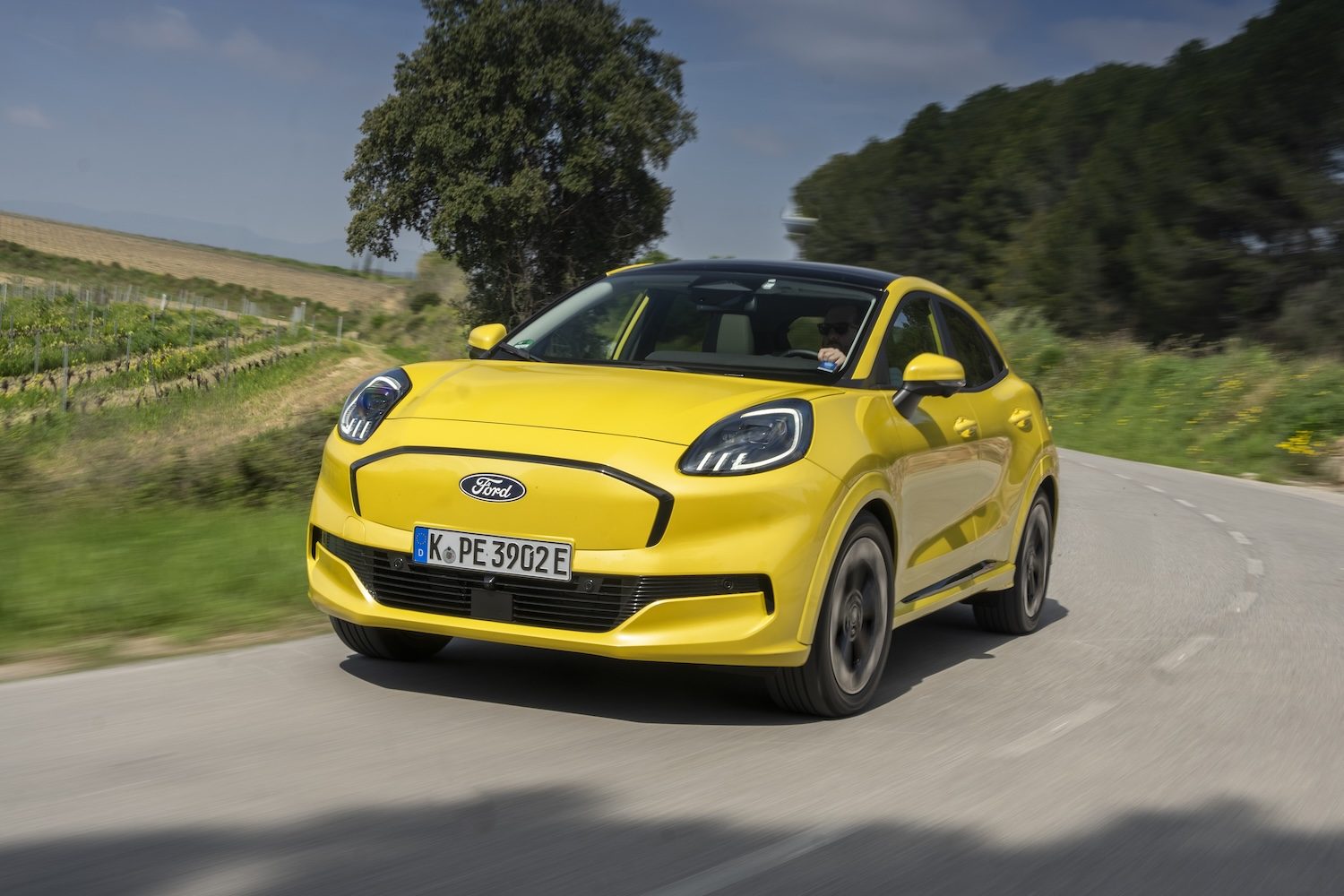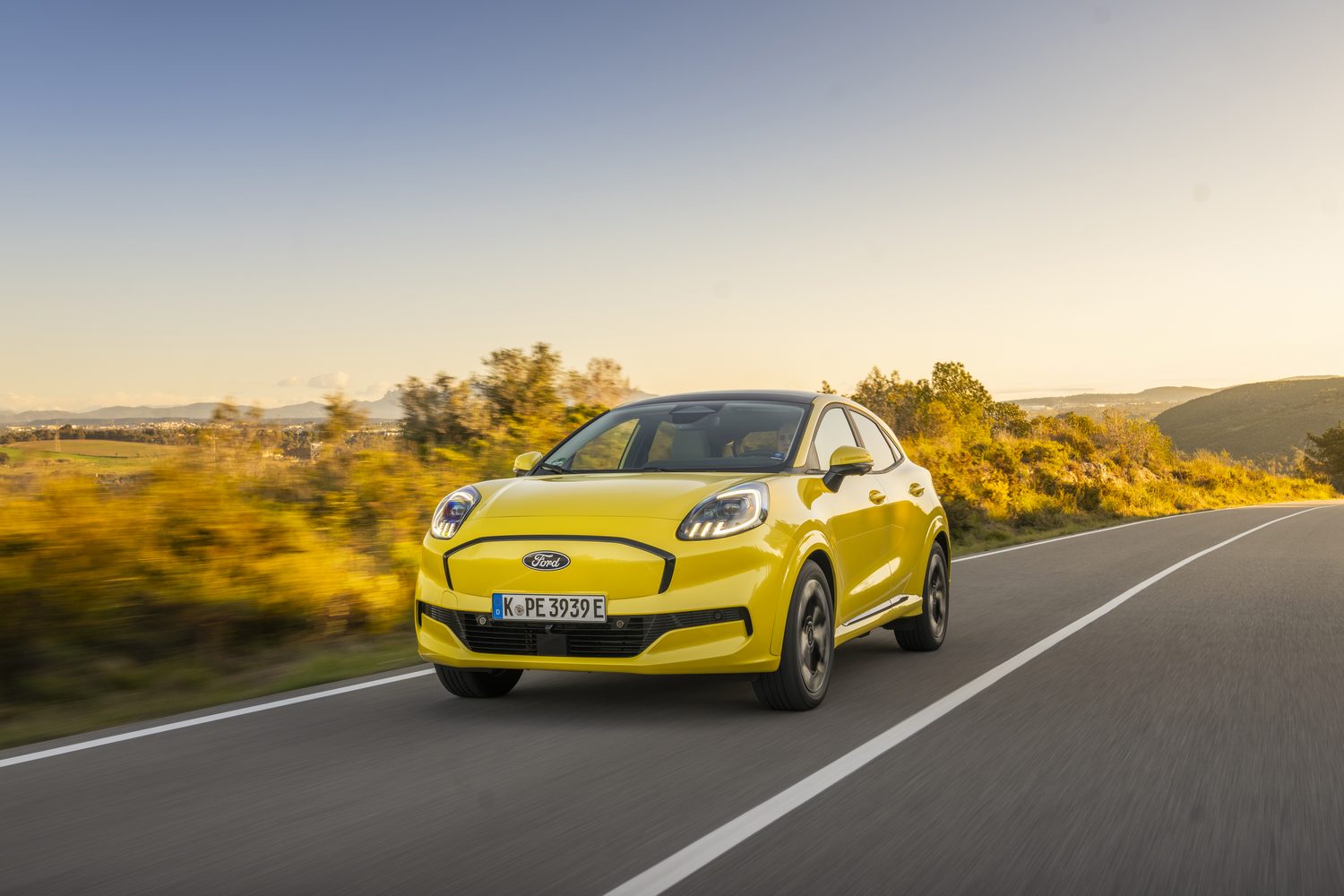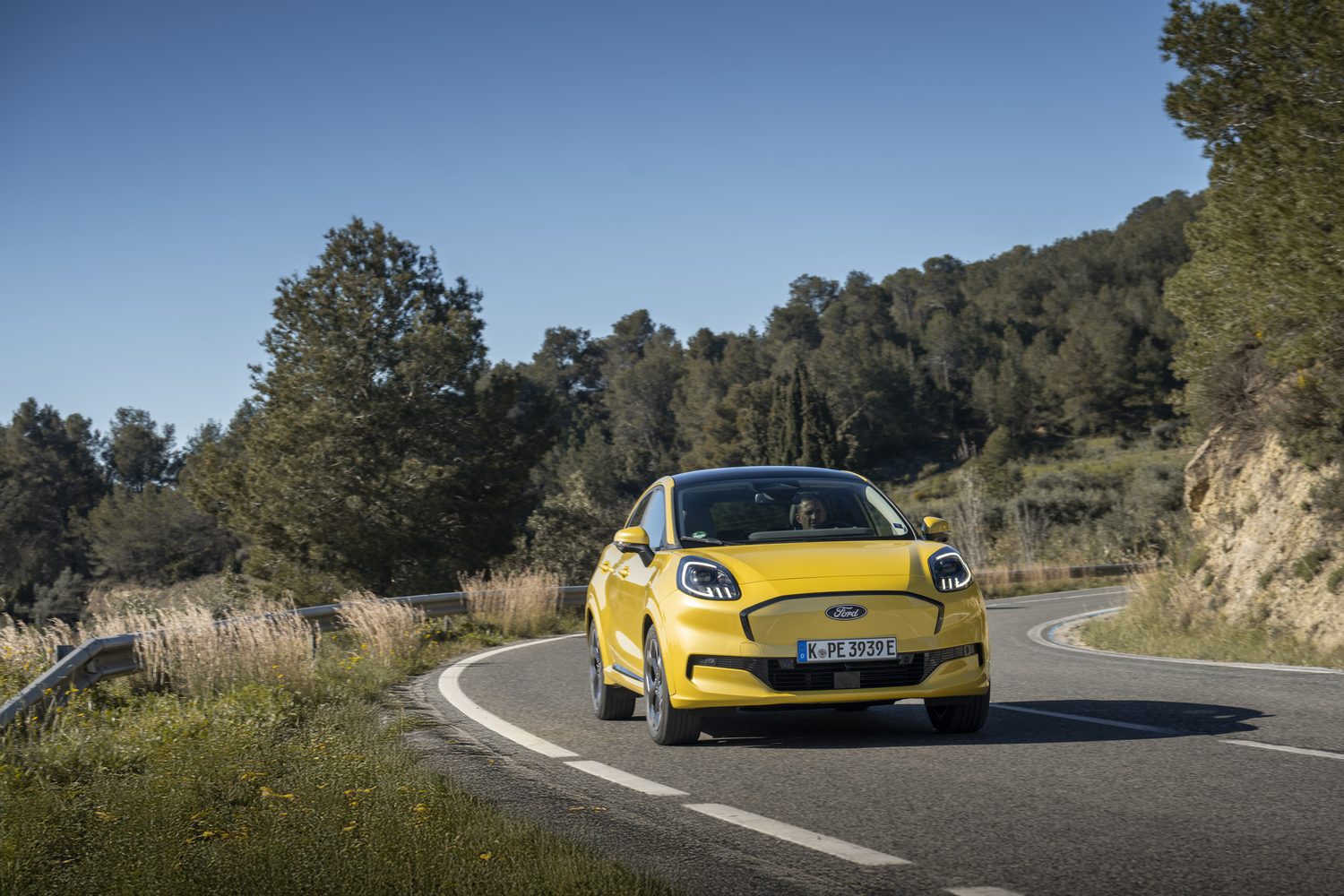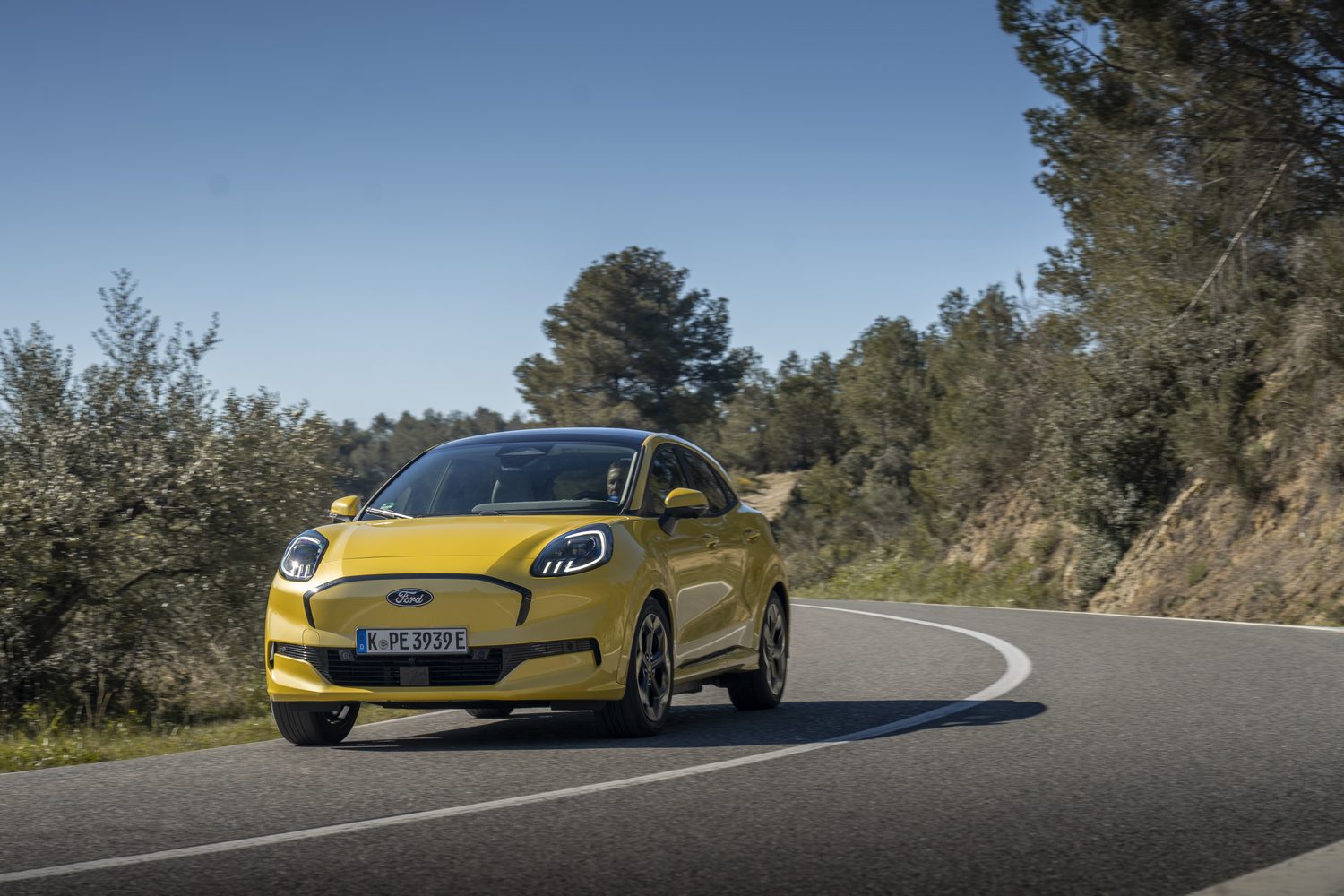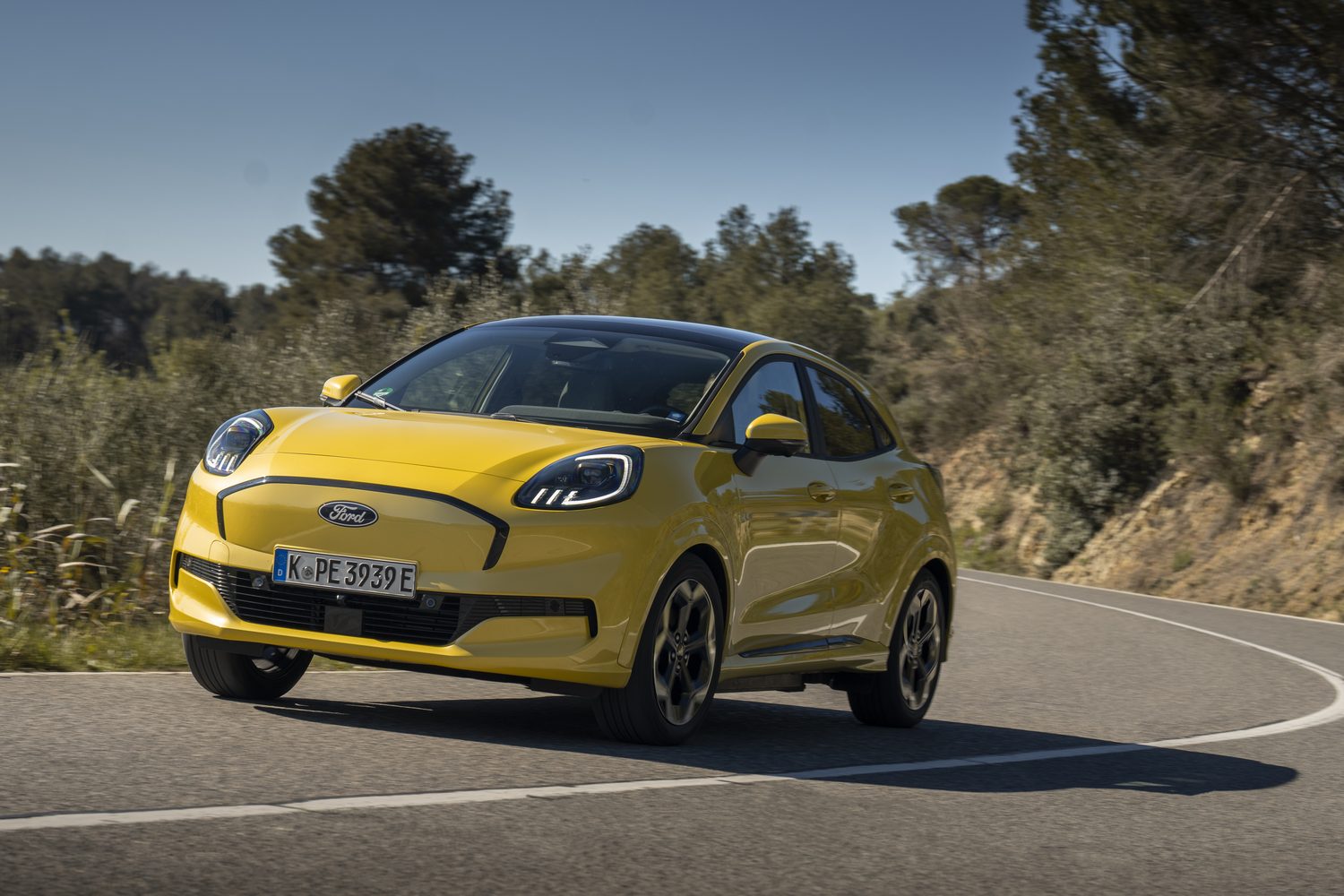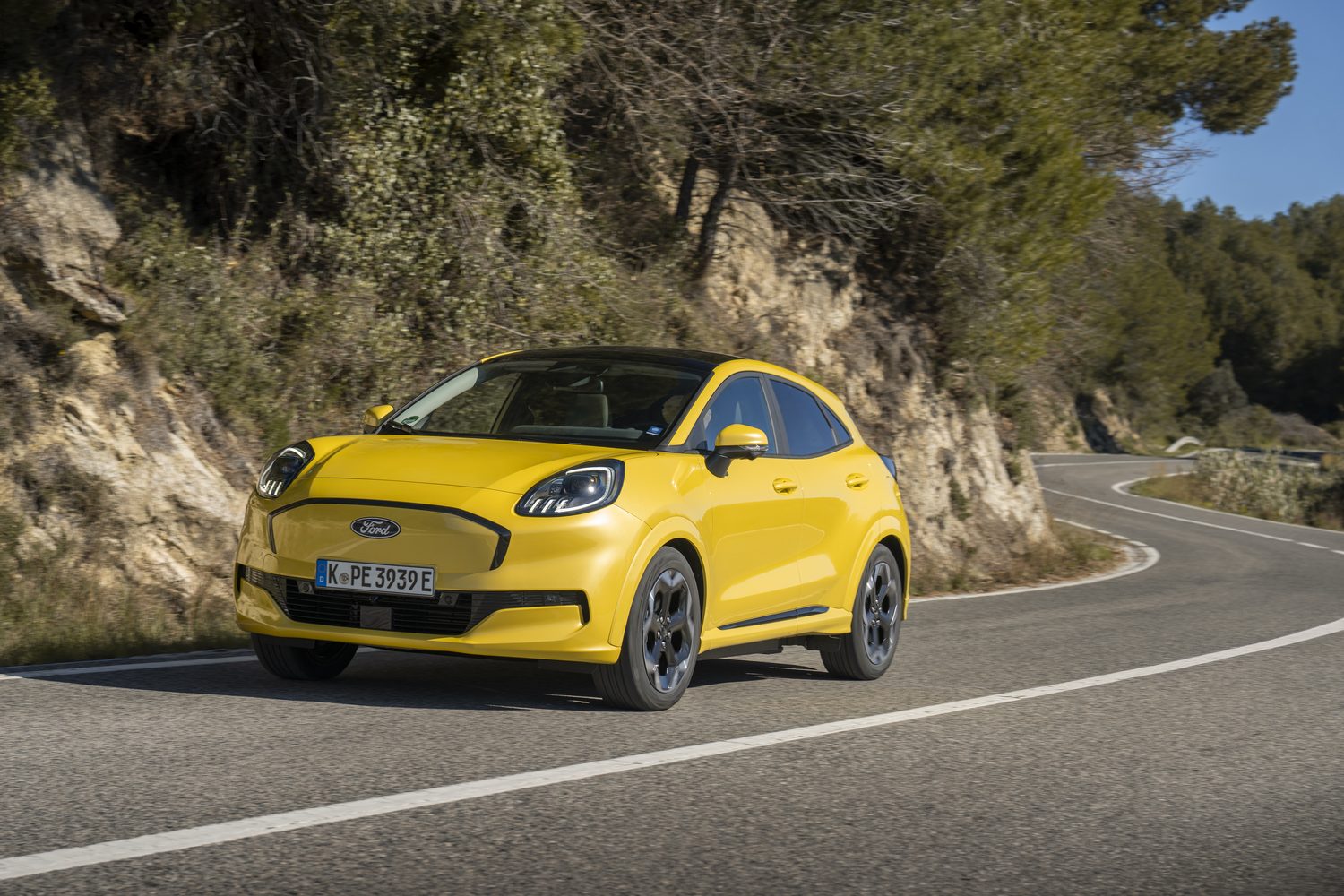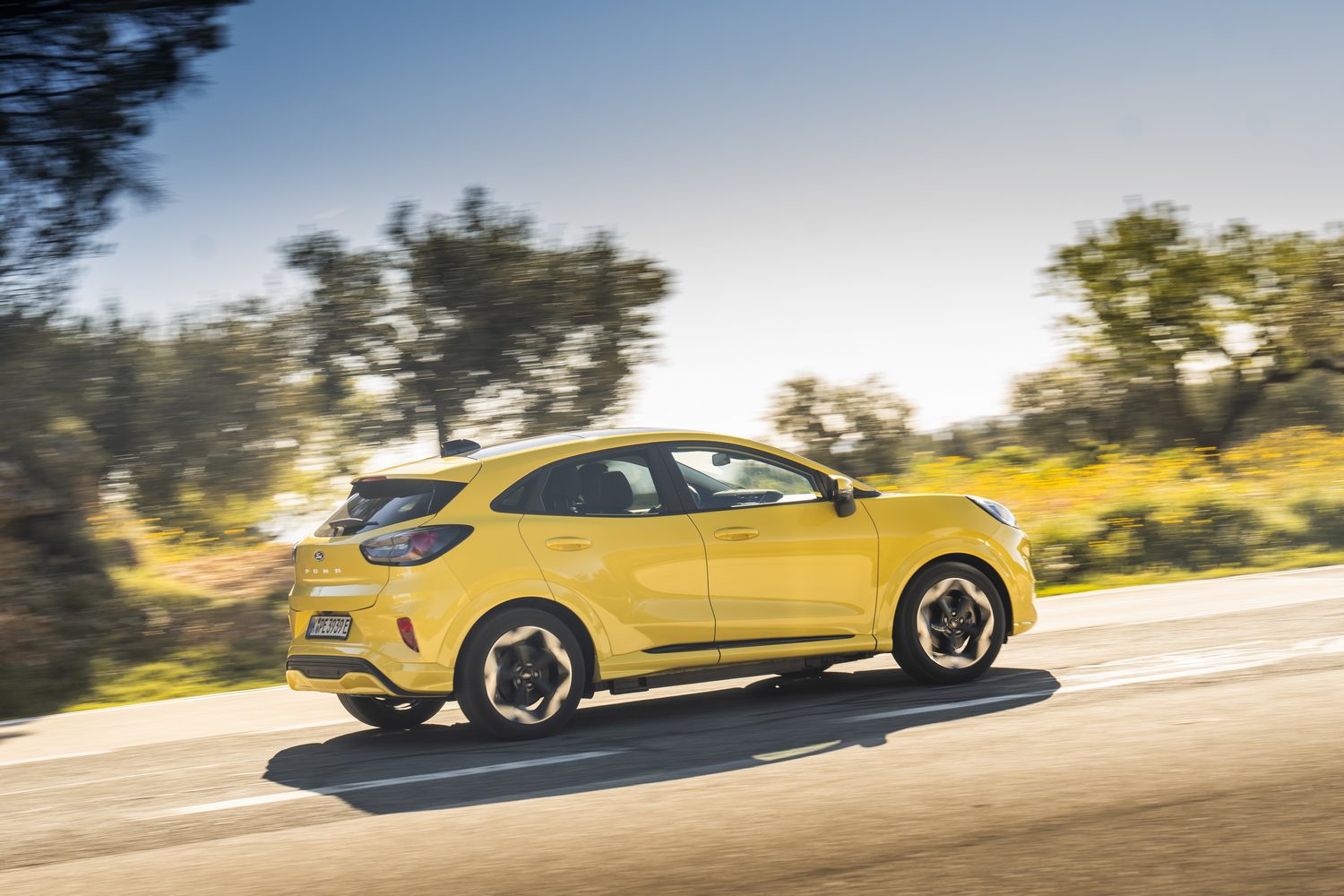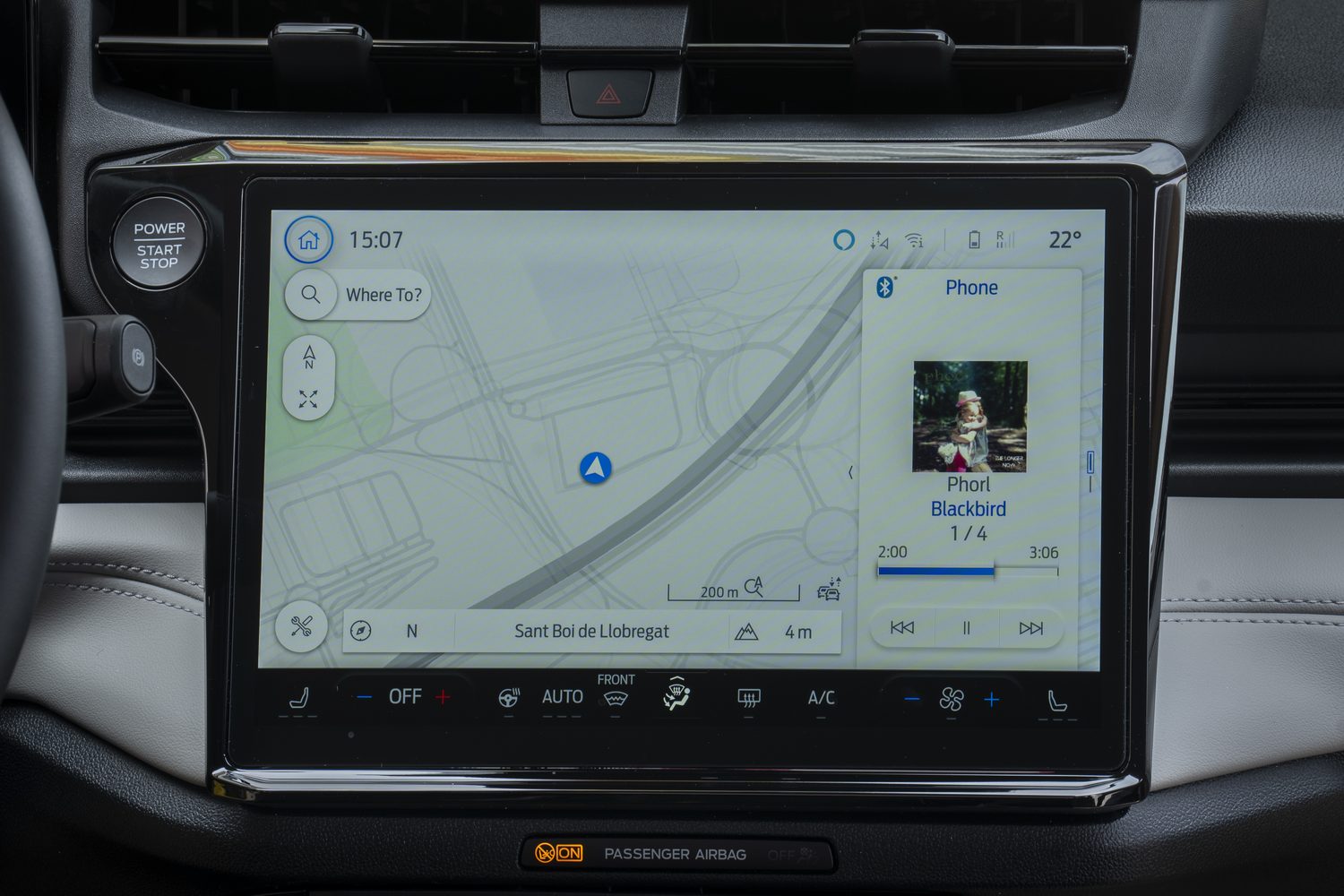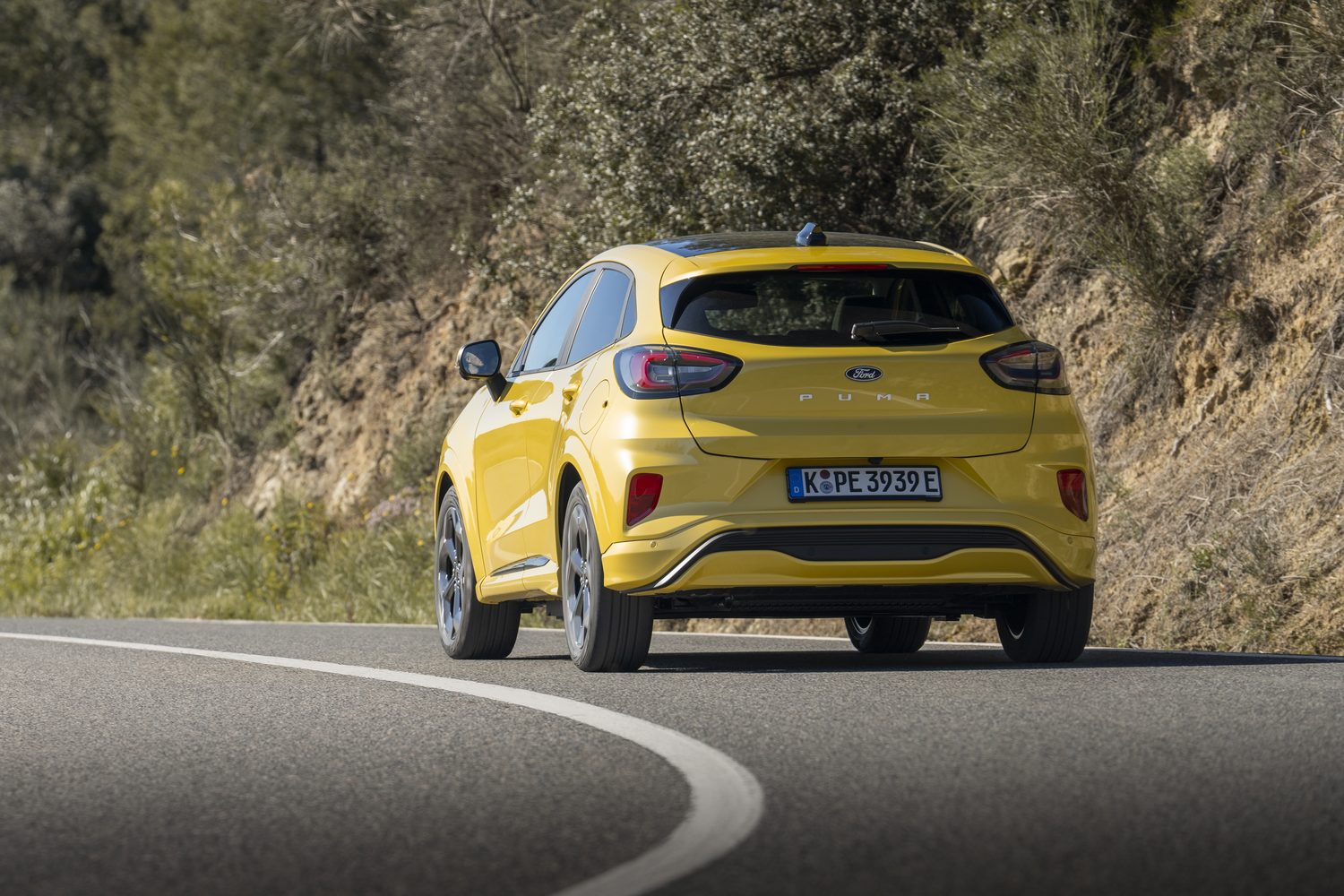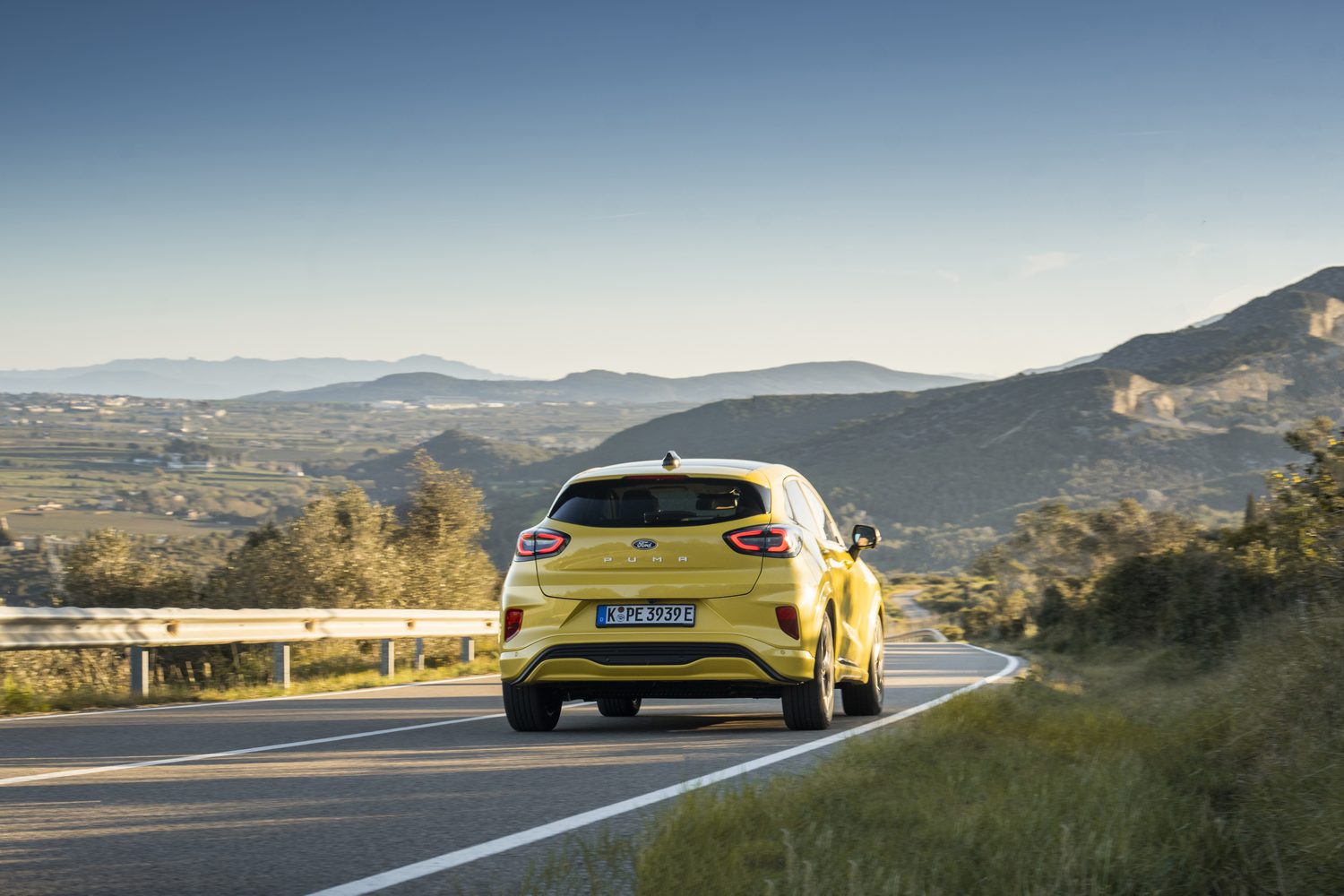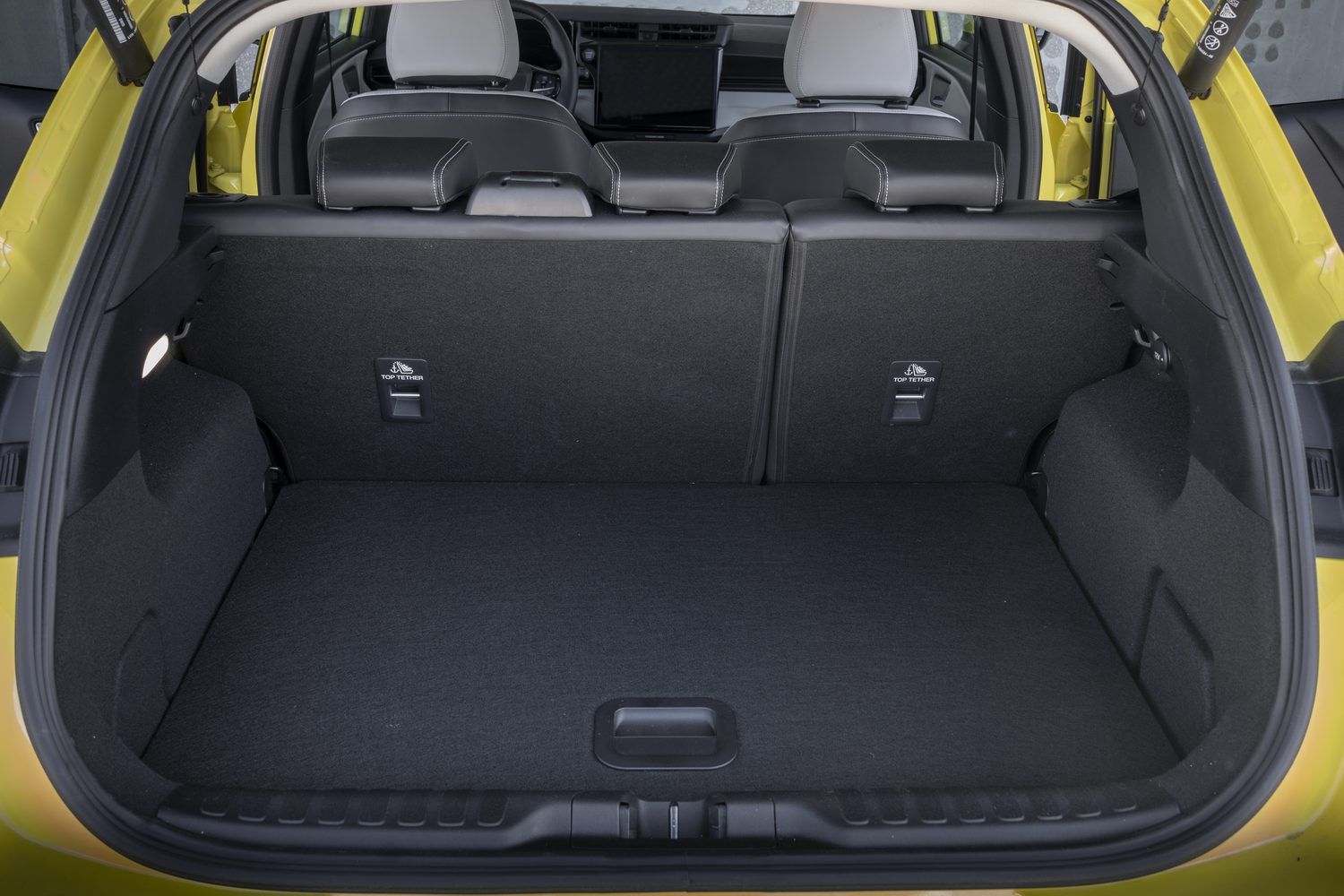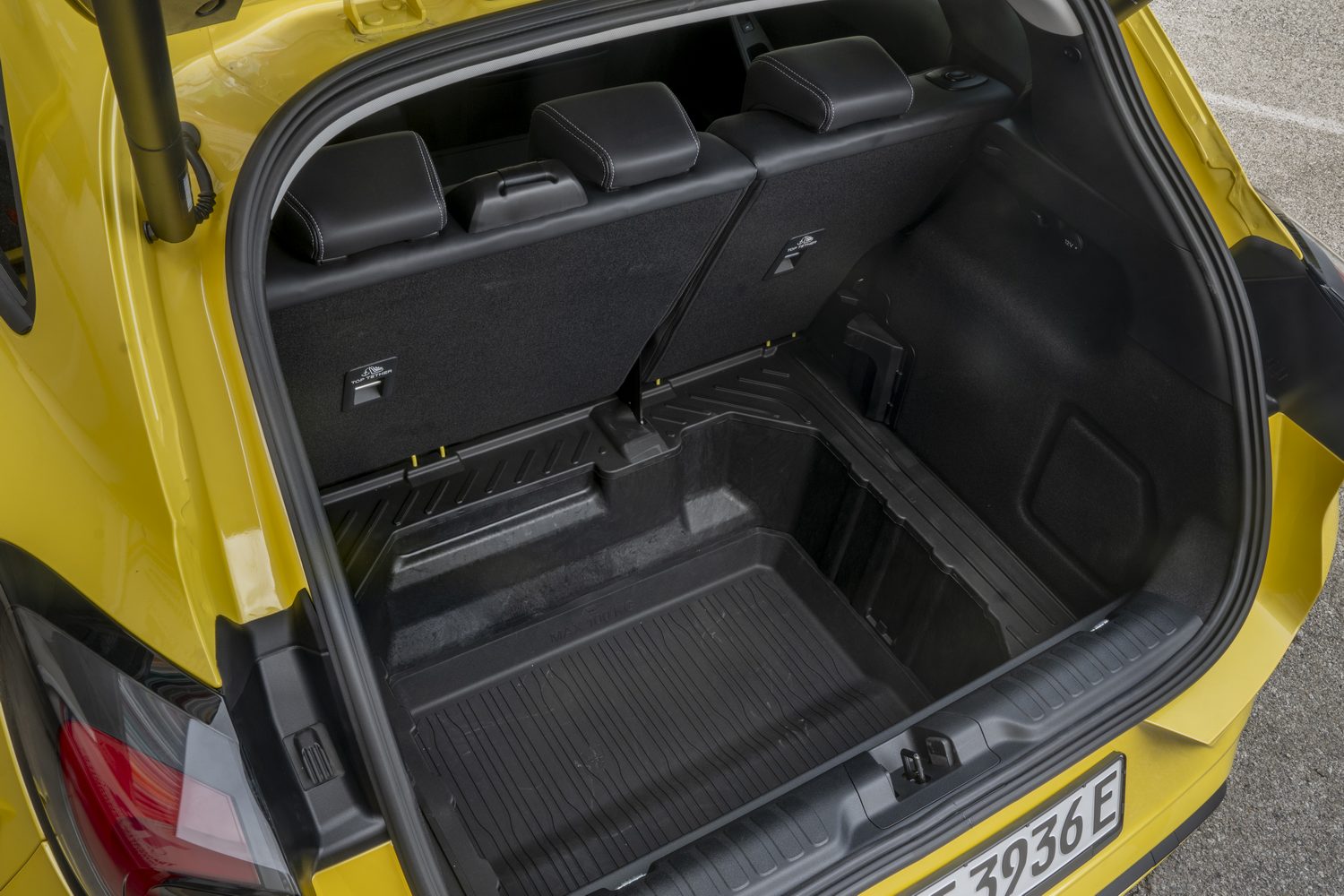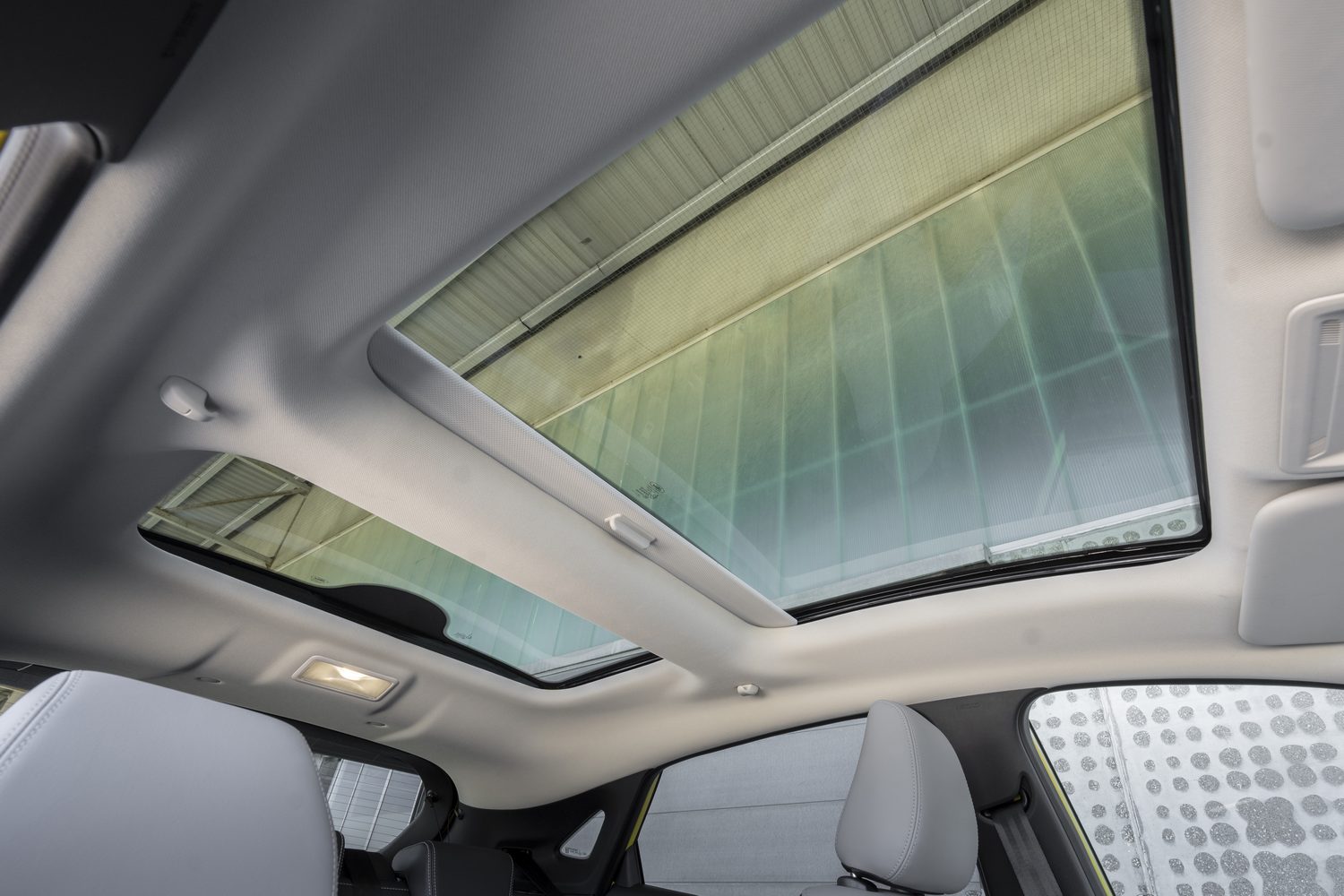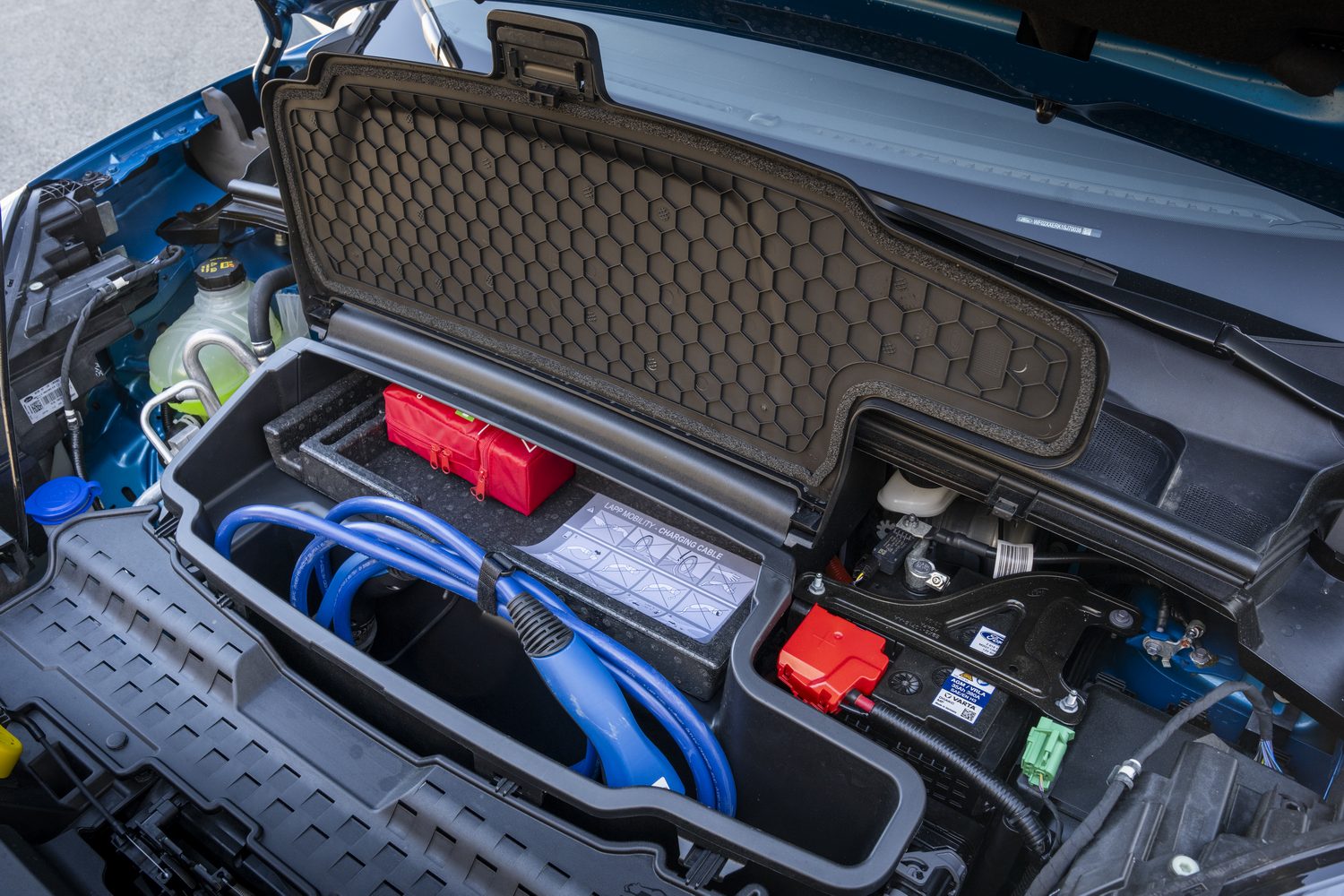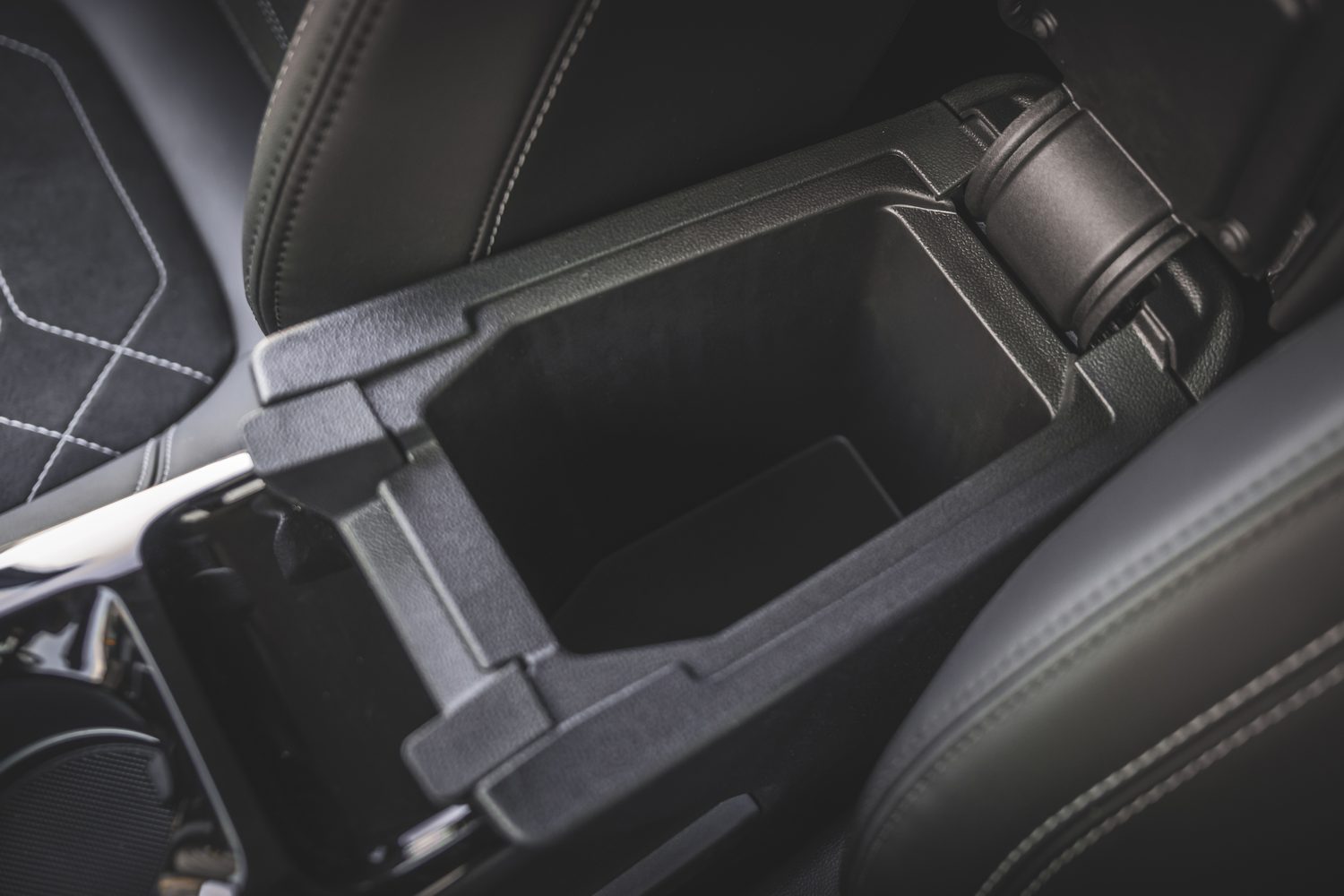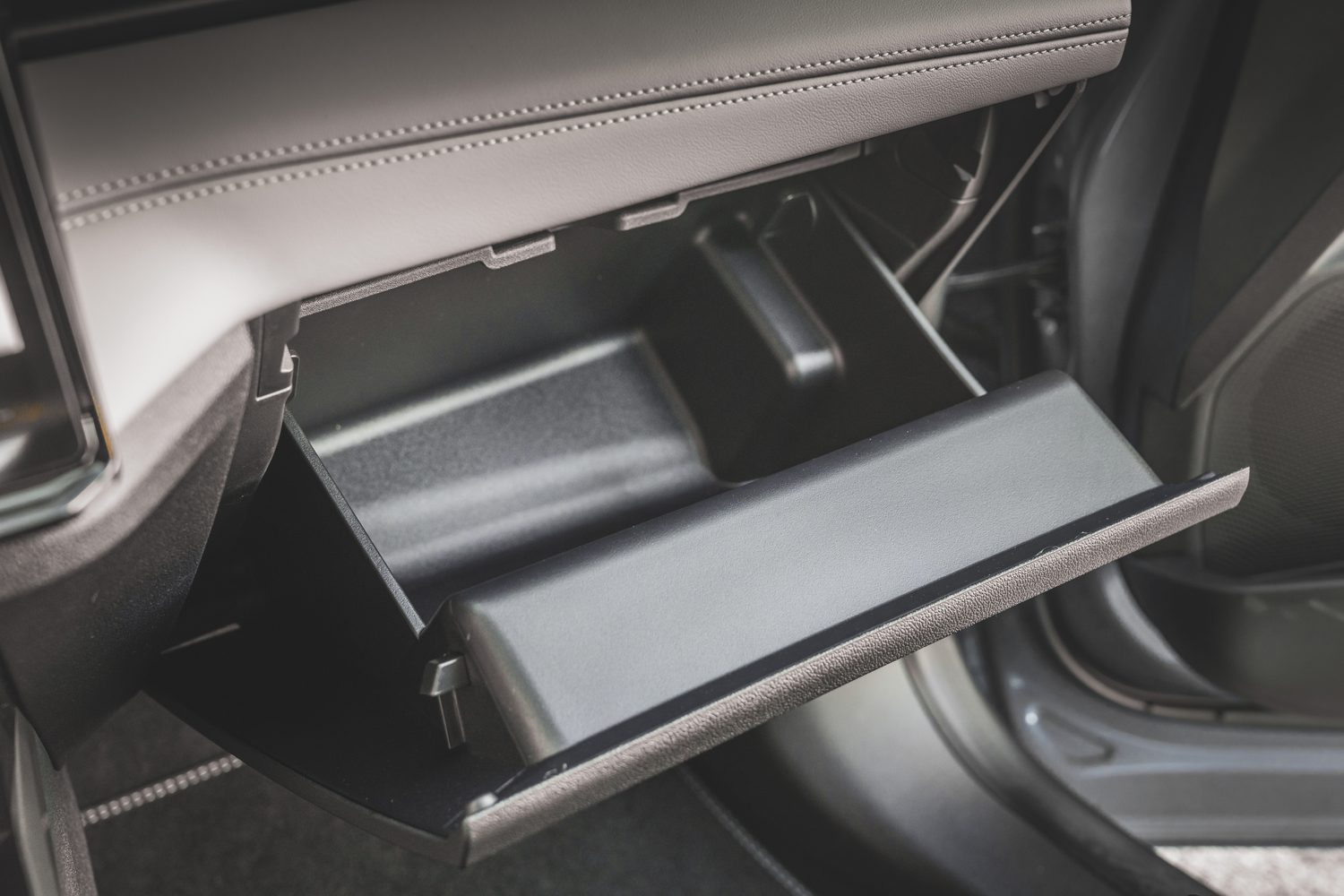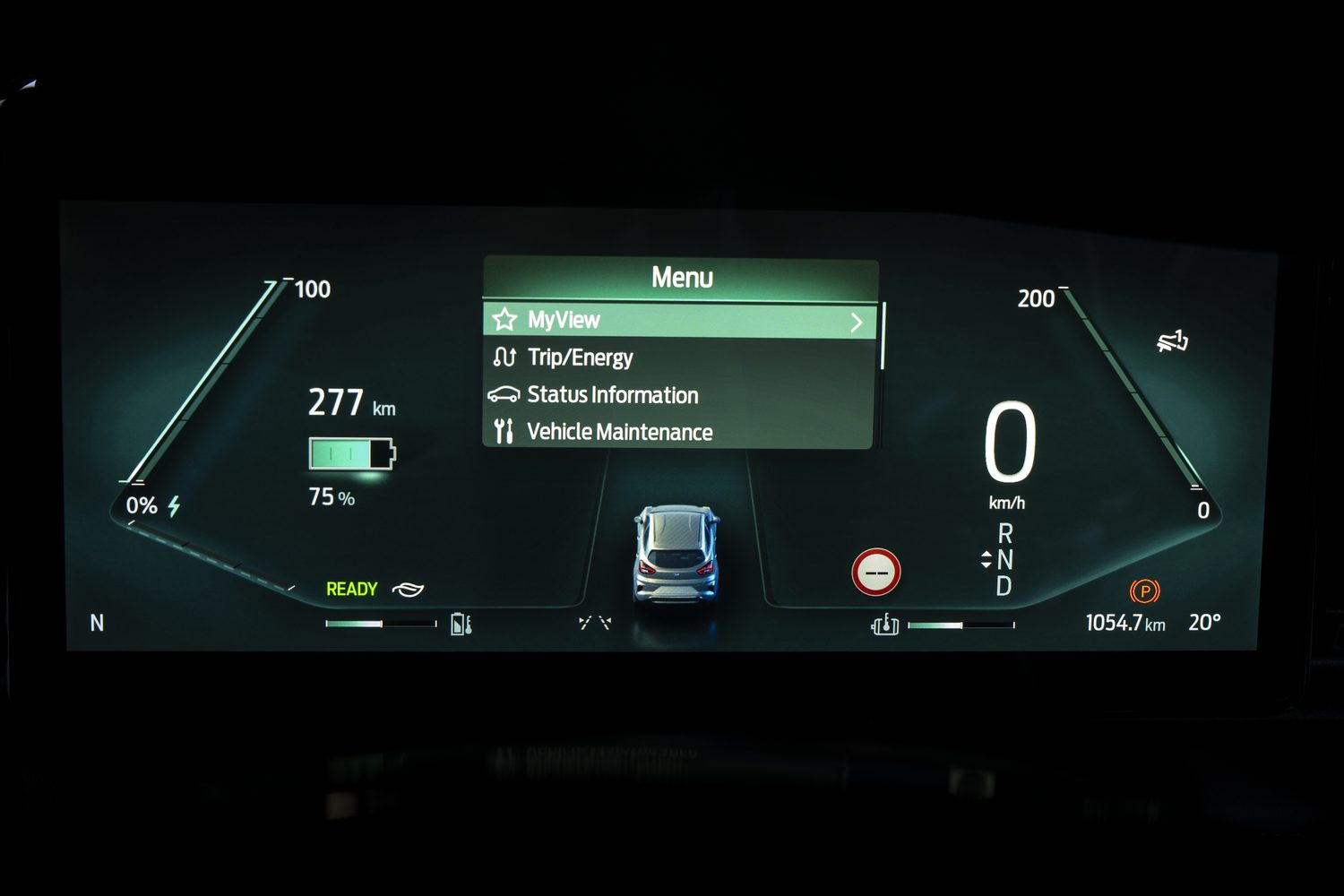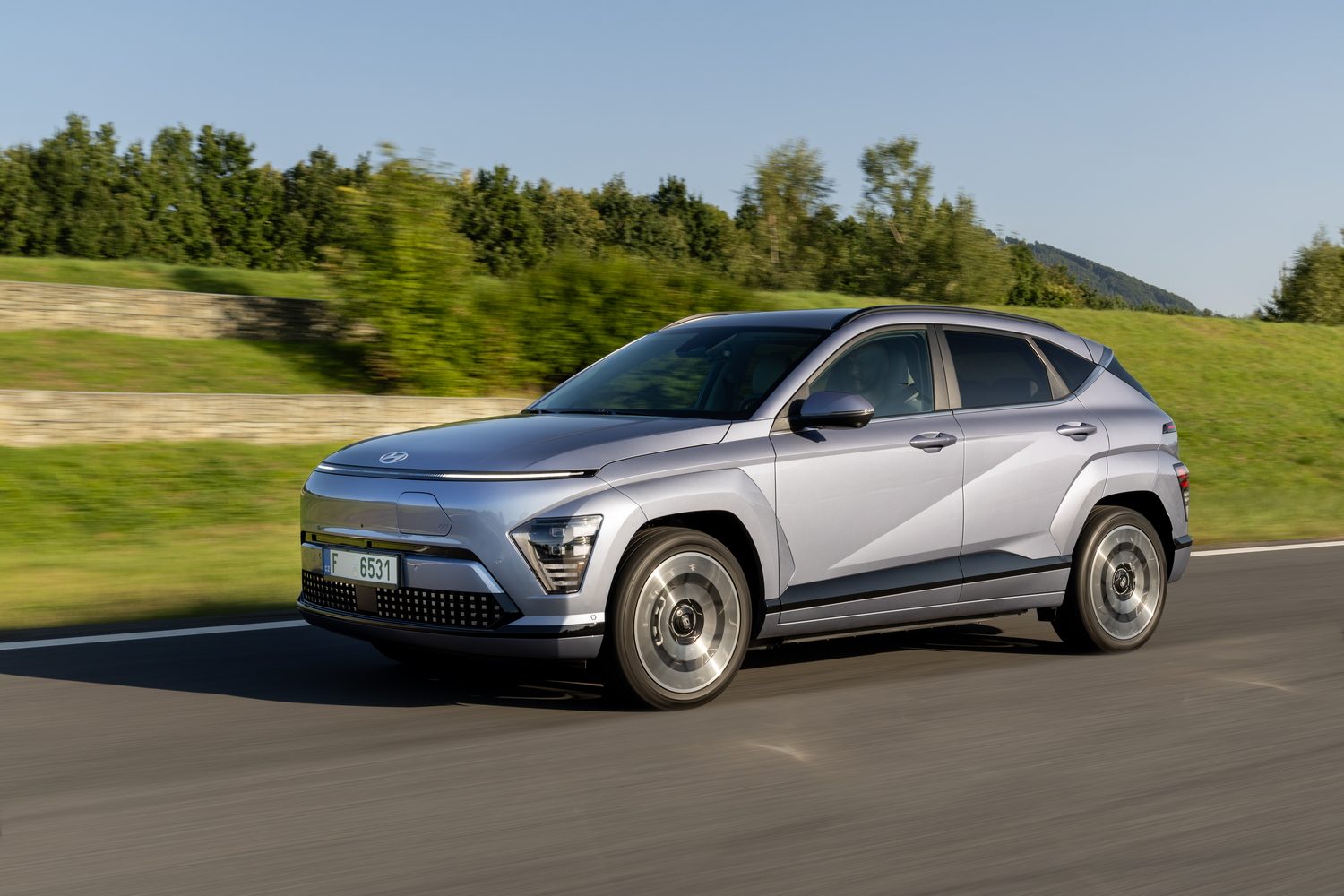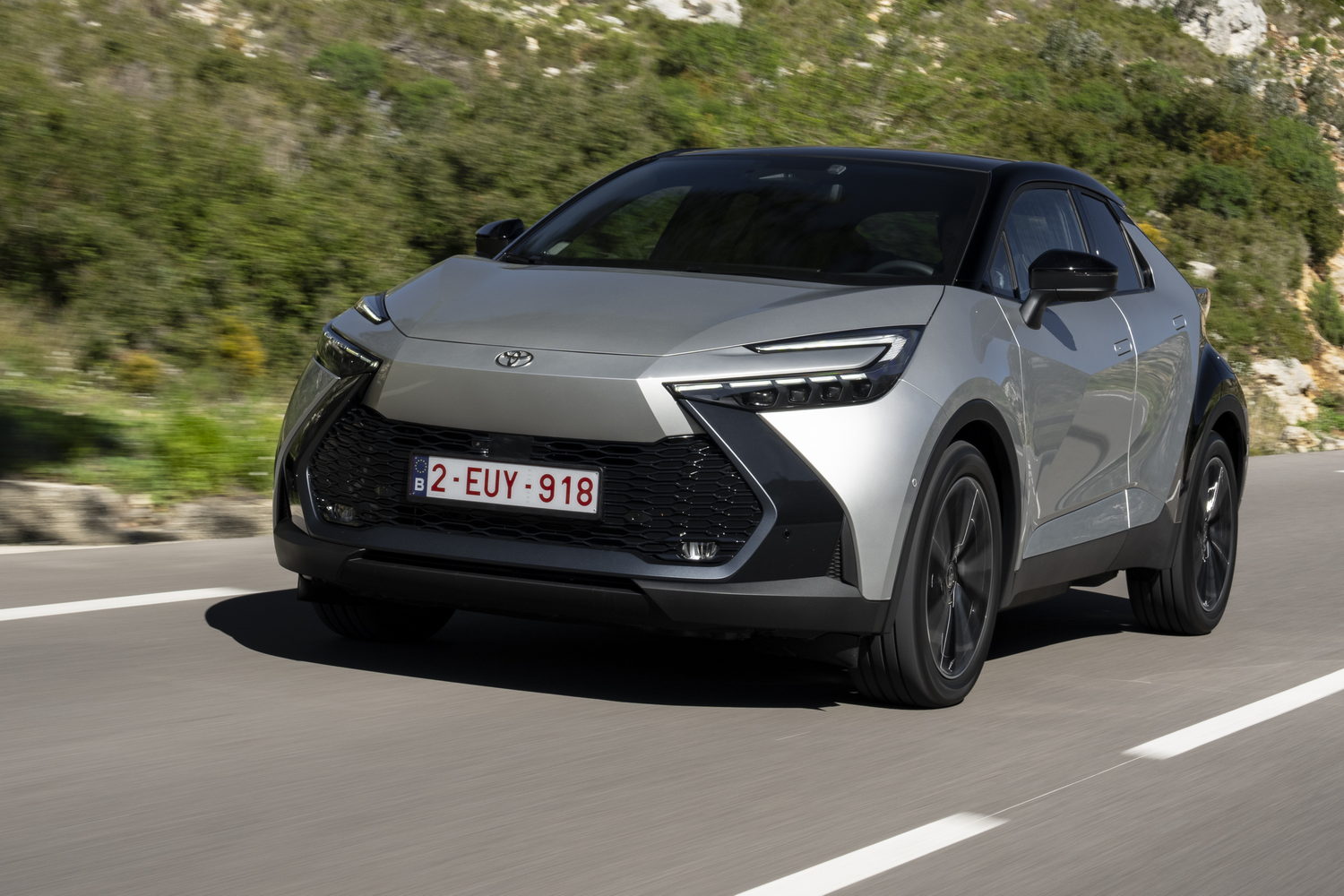Introduction to the 2025 Ford Puma Gen-E
The current Ford Puma has been around since 2020, reviving a name that was previously used on a sporty two-door coupe based on the Fiesta. It was reinvented as a compact crossover competing with popular models such as the Hyundai Kona, Cupra Formentor, Renault Captur and Toyota C-HR. With the demise of both the Fiesta and the Focus, the Puma is now Ford's smallest car.
And now, for the first time in its lifetime, the crossover is going fully electric. It's called the Puma Gen-E and this - the car's international launch to the world's media in Spain - is our first opportunity to drive it.
Pros & Cons of the 2025 Ford Puma Gen-E
Pros: Reasonably efficient, loads of boot space
Cons: Rear passenger space isn't very generous, firm suspension
Exterior & Design of the 2025 Ford Puma Gen-E

• Aero-optimised bodywork
• 17- or 18-inch wheels
• Extended rear spoiler
There are only subtle differences between the existing mild-hybrid Puma and this all-electric Ford Puma Gen-E. Most of these changes were done to optimise the car's aerodynamic properties so that it can cut through the air more efficiently.
Most obviously, the Puma no longer has the requirement for a large grille to cool its engine at the front. This area is now completely blanked off, but to break up what might otherwise look a bit too bland at the front, Ford's designers have added a contrasting black trim piece that forms the outline of a grille shape which is similar in appearance to that of Ford's other electric SUV, the Mustang Mach-E.
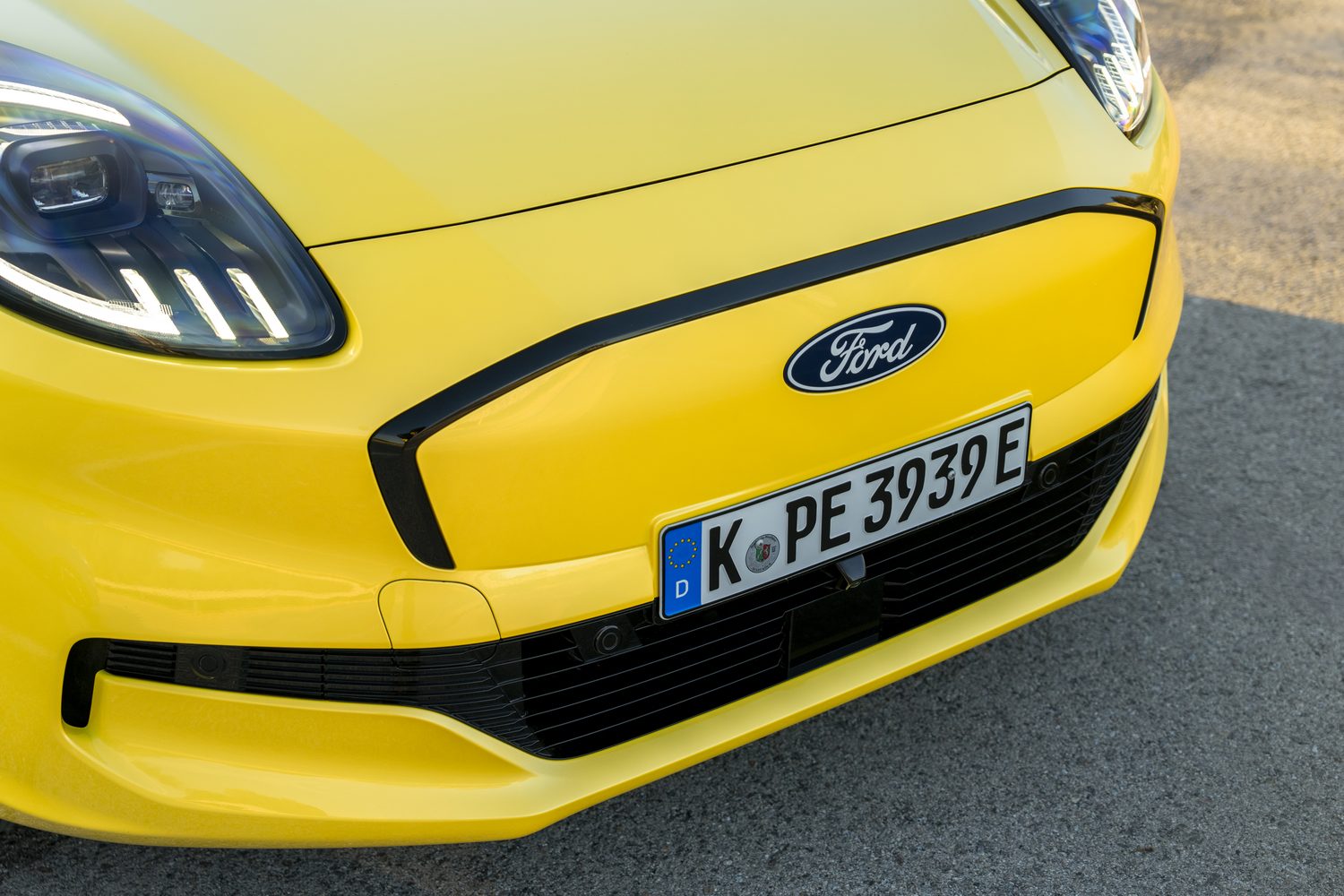
The lower bumper section in the Puma features active air shutters that open when cooling for the electrical system is required, and remain shut when not, thus further boosting the car's aerodynamics. On each corner of this section are channels for the air to pass through and exit across the face of the front wheels.
The Select specification gets 17-inch wheels, and it's this version that gets the longest driving range - because of that. On the Premium version, as tested here, the wheels have a unique design and are 18 inches in diameter. One other difference between the Select and Premium models is that the latter gets upgraded LED headlights that have a different daytime running light signature.
At the Puma Gen-E's rear is a longer roof spoiler than the petrol-engined version gets and there's the option of a panoramic glass roof that opens, or a black-painted roof. Ford thankfully fits the rear window with a small wiper and the rear diffuser is restyled as there's no exhaust outlet.
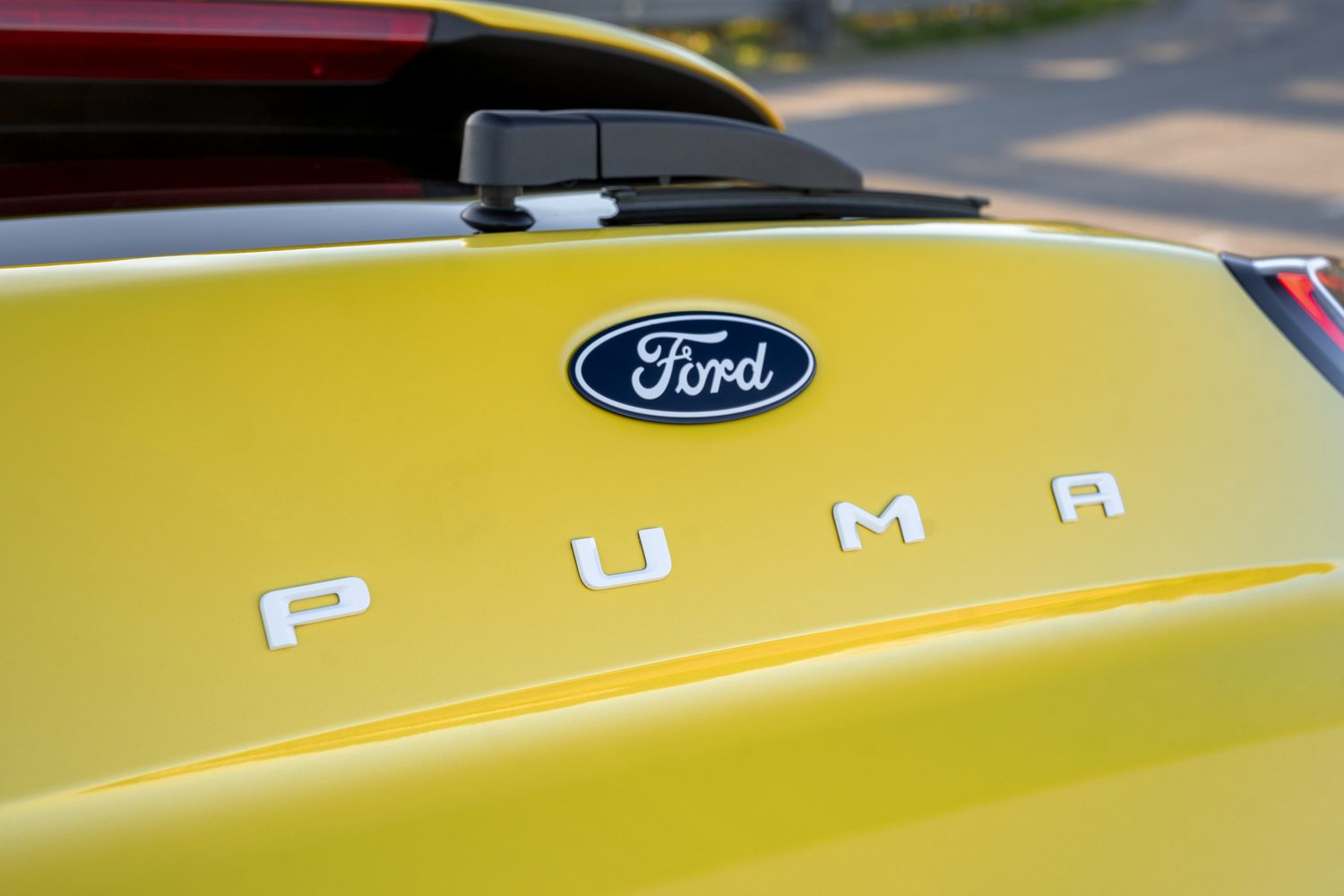
One other visual cue that distinguishes this as the electric version is the Puma word mark across the rear, which is in white rather than black.
For reference, the key exterior dimensions for the Ford Puma Gen-E are:
Length: 4,214mm
Width: 1,930mm (including mirrors)
Height: 1,555mm
Wheelbase: 2,588mm
Interior, Practicality, Tech & Comfort of the 2025 Ford Puma Gen-E
• Dual-screen layout
• Huge 574-litre boot thanks to the 'Gigabox'
• Limited rear passenger room
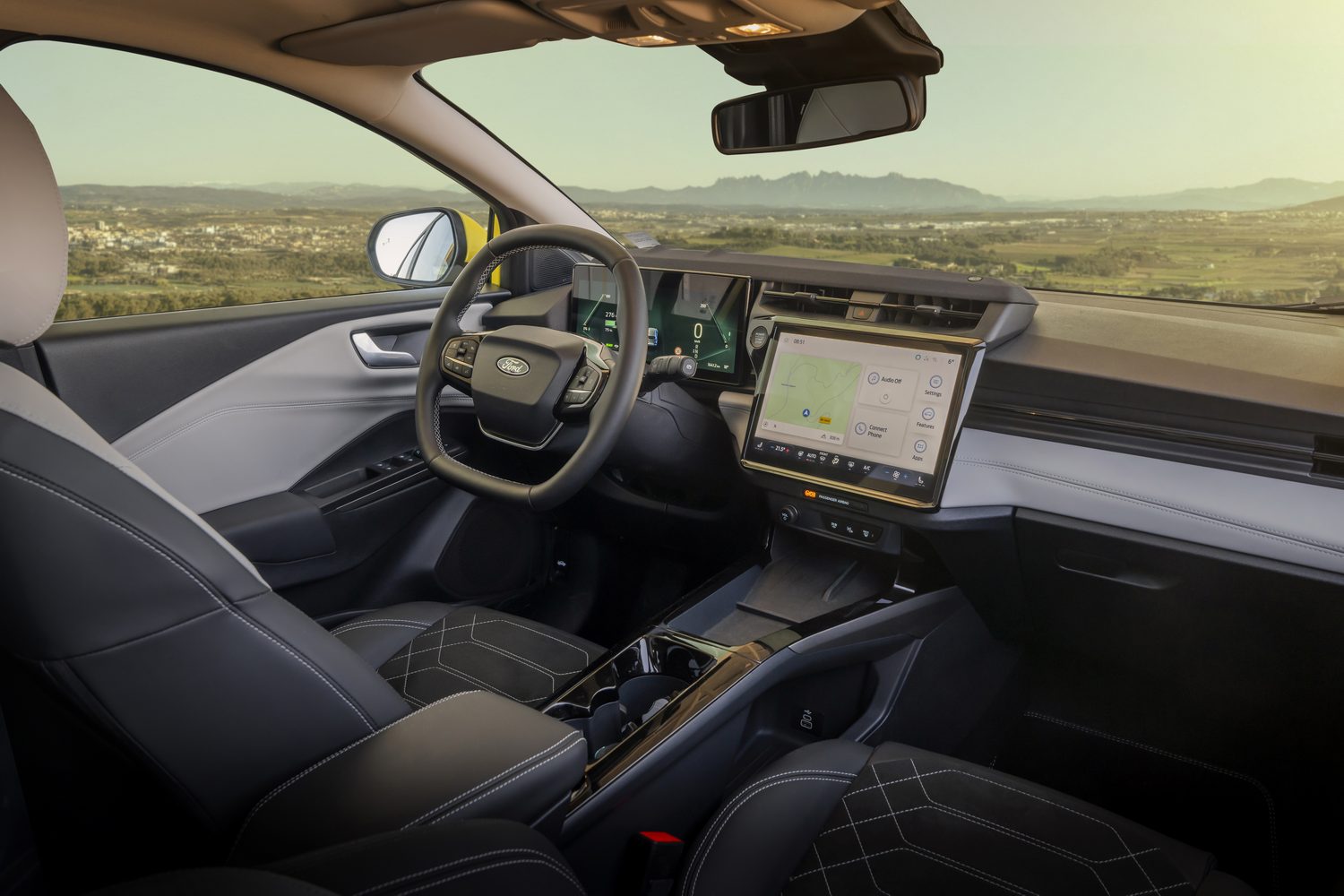
It might not look all that different from the outside, but as soon as you sit into the driver's seat of the Puma Gen-E it's clear to see how different it is to other versions. Ford ditched its usual nicely sized flat-bottomed steering wheel in favour of a larger and much more square design. It looks too big for the car and while it feels ok to hold, we feel it's a retrograde step.
The increased 'height' of the steering wheel does provide an unobstructed view of the 12.8-inch digital instrument display, though we feel that even this screen seems unnecessarily large for the car. That aside, the graphics are good, display resolution crisp and all of the relevant information is there at a glance.
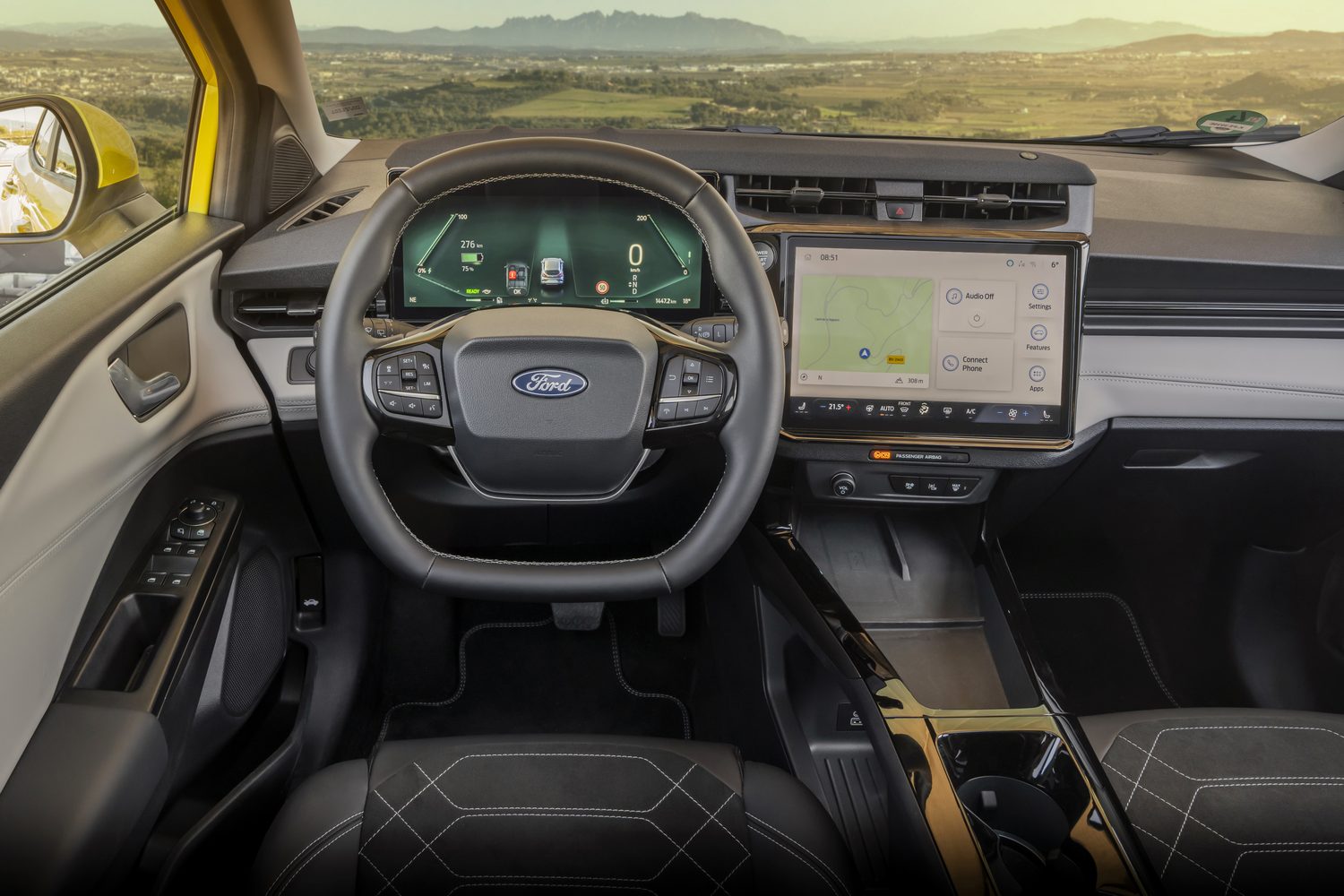
The touchscreen is a 12-inch unit that has quite a square design, so it fills up the centre console well. Ford's native infotainment system is intuitive to use and has the requisite processing power behind it, so it reacts quickly to all of your inputs and requests. You can, of course, run Android Auto and Apple CarPlay if you prefer to mirror your smartphone.
With the revised dual-screen layout, there are no longer physical controls for the climate settings, again something we feel is a step backwards for Ford. Thankfully, all of these controls, including the heated windscreen (which is optional as part of a winter pack), are always visible along the bottom of the touchscreen.
Visually, the whole dashboard and centre console unit looks a less cohesive design than in other Puma models, appearing more like a smorgasbord of items that have been cobbled together, and topped off with a sound bar speaker across the top.
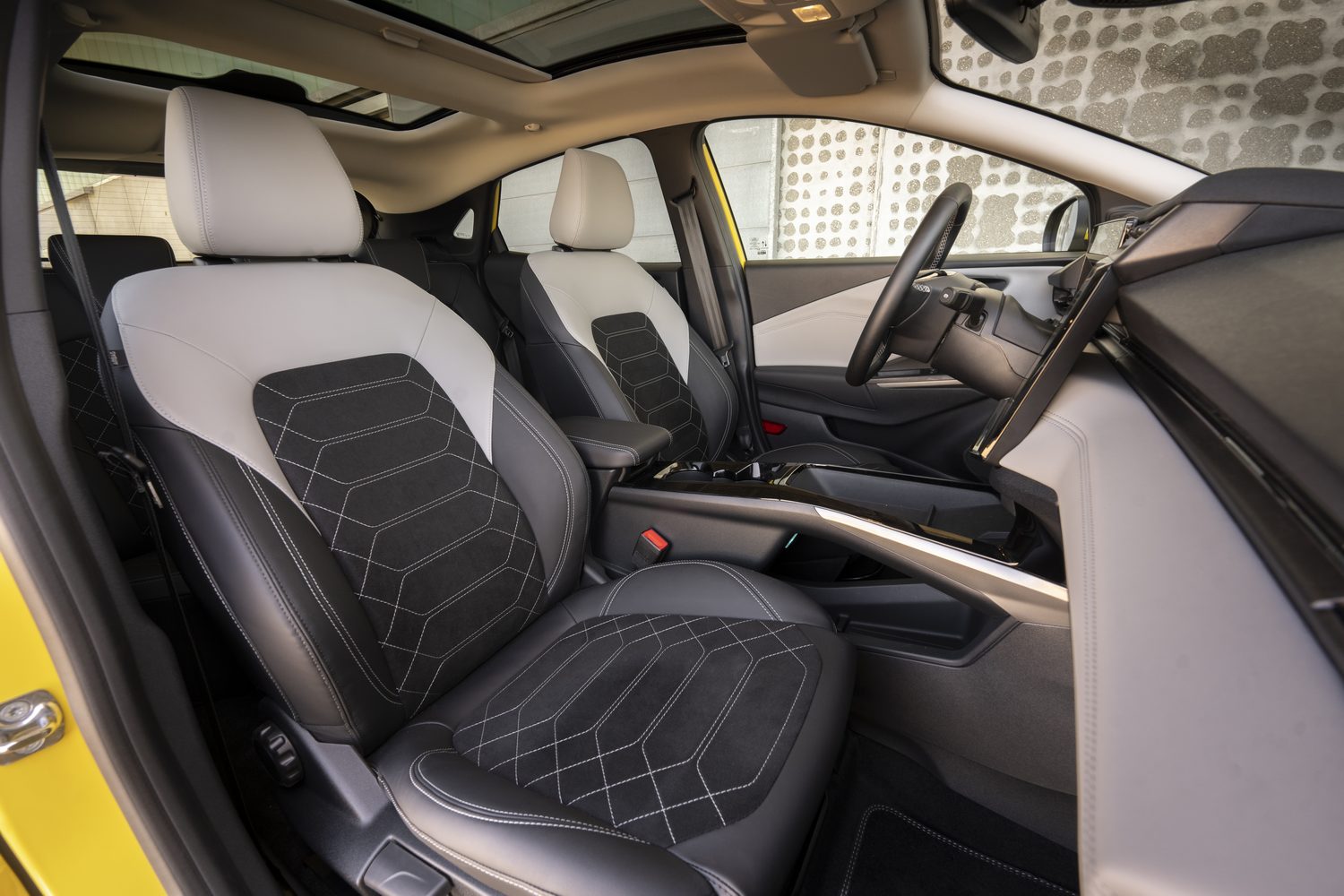
Switching across to electric drivetrains means the Puma Gen-E has an automatic transmission and therefore the selector moves up to the steering column. That change created more stowage space between the front seats.
The top section features a wireless charging pad and room for other oddments. A three-section cupholder is joined by further storage beneath the central armrest. The lower section is accessible from either side and has more room for a small bag and the like, and has USB charge ports, though these are a little finicky to access as they're not easily visible.
The seats are comfortable and supportive but while Ford includes an electrically operated tailgate, you'll have to adjust your seats manually. We reckon some of the other material surfaces such as on the doors and dashboard could be finished to a higher quality.
On first inspection the rear seems to provide a decent amount of passenger space for a car in this class, but when you sit in you discover that the floor is quite high, which will leave some taller adults feeling as if their knees are up around their ears. Sandwiching the battery into the floor without any significant structural changes has eaten into how much foot space there is too, so getting your feet in beneath the seat in front isn't easy.
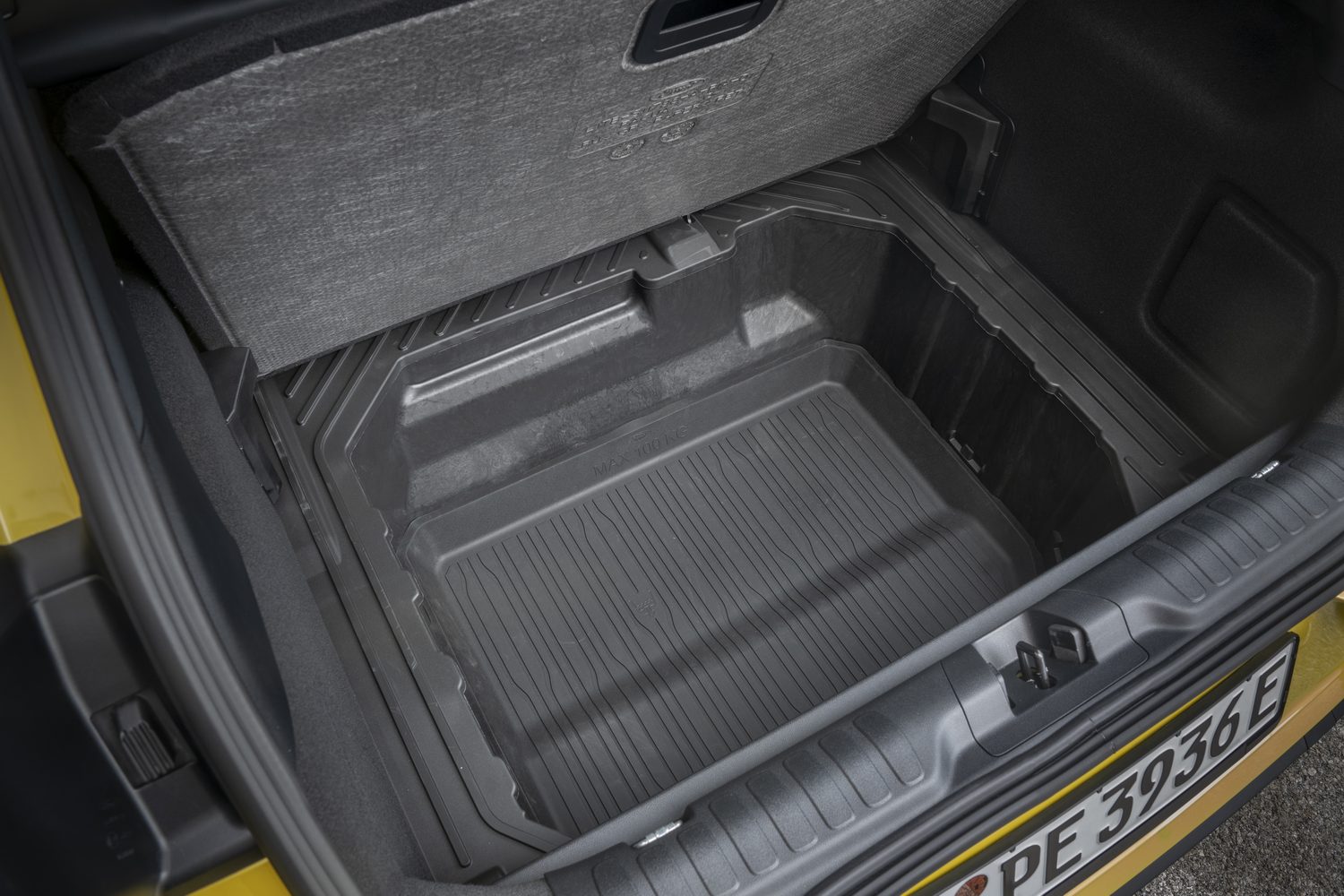
Legroom is decent and headroom isn't too bad for adults of average height. The optional panoramic sunroof is divided into two, so rear passengers get their own glass section above with a manual sun blind. Both of the outer rear seats get ISOFIX child-seat mounting points, but the middle seat is quite narrow, so don't expect to be able to squeeze an extra booster seat in there.
Where the Puma Gen-E makes up for its limited rear passenger space is in the boot. It doesn't appear to be the deepest of boot areas when initially opened, but the floor can be lowered down several centimetres.
Furthermore, in an evolution of what's in the regular Puma, the extra storage box beneath the boot floor is enlarged in the Puma Gen-E and renamed the 'Gigabox'. This adds 145 litres of additional space and has a useful drain plug that be opened for easy cleaning, for example if you've left muddy sports equipment in there.
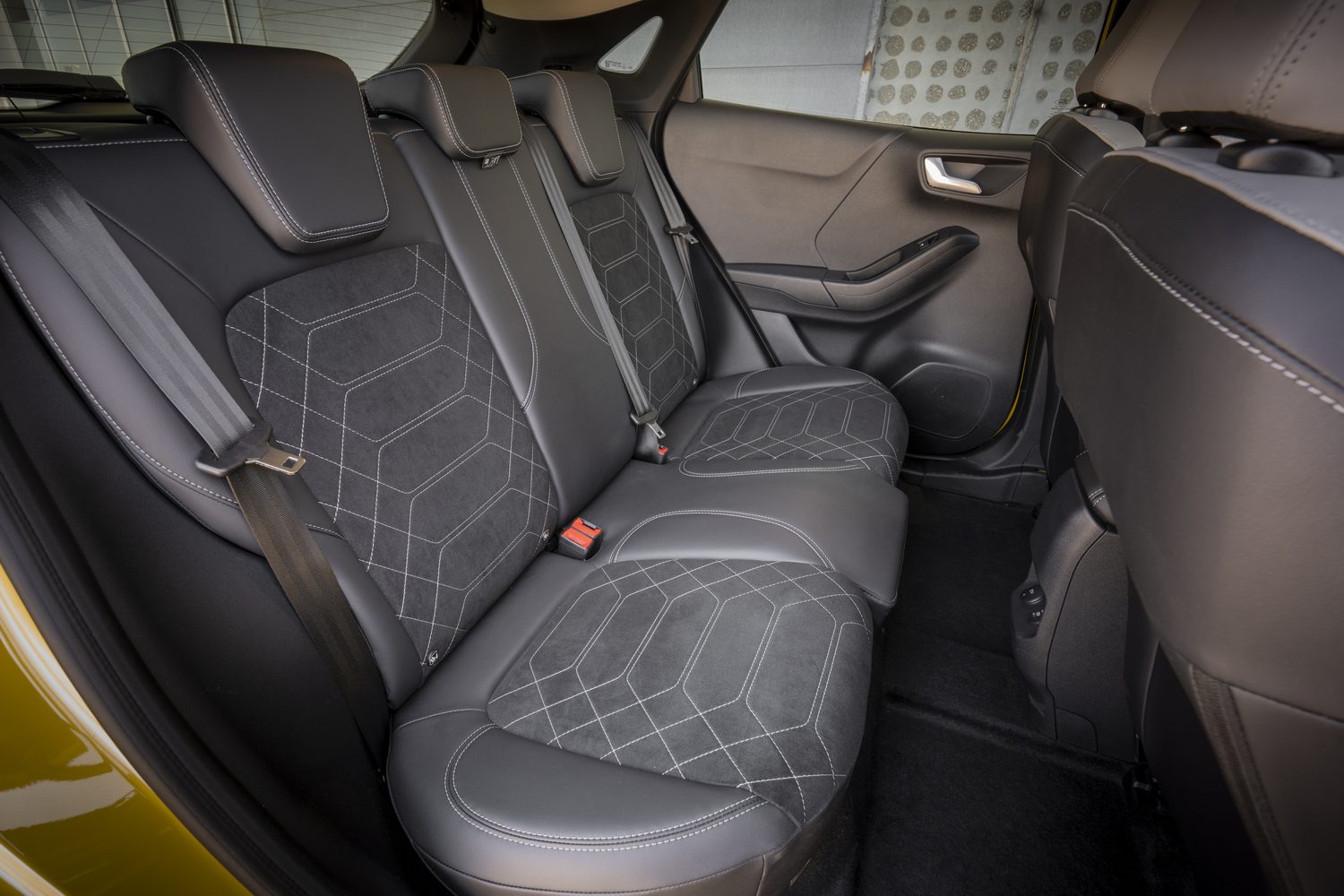
The rear seats can also fold in a 60:40 split, bringing the total cargo capacity to 1,283 litres. The Puma Gen-E's electric motor is compact enough that Ford can still provide a 43-litre storage section under the bonnet that's deep enough to hold a set of charging cables and a removable tray unit that holds the towing eye and tyre inflation kit. You don't get a spare wheel with the Ford Puma Gen-E.
Performance of the 2025 Ford Puma Gen-E
• Battery preconditioning built-in
• Reassuringly positive brake feel
• Suspension is on the firm side
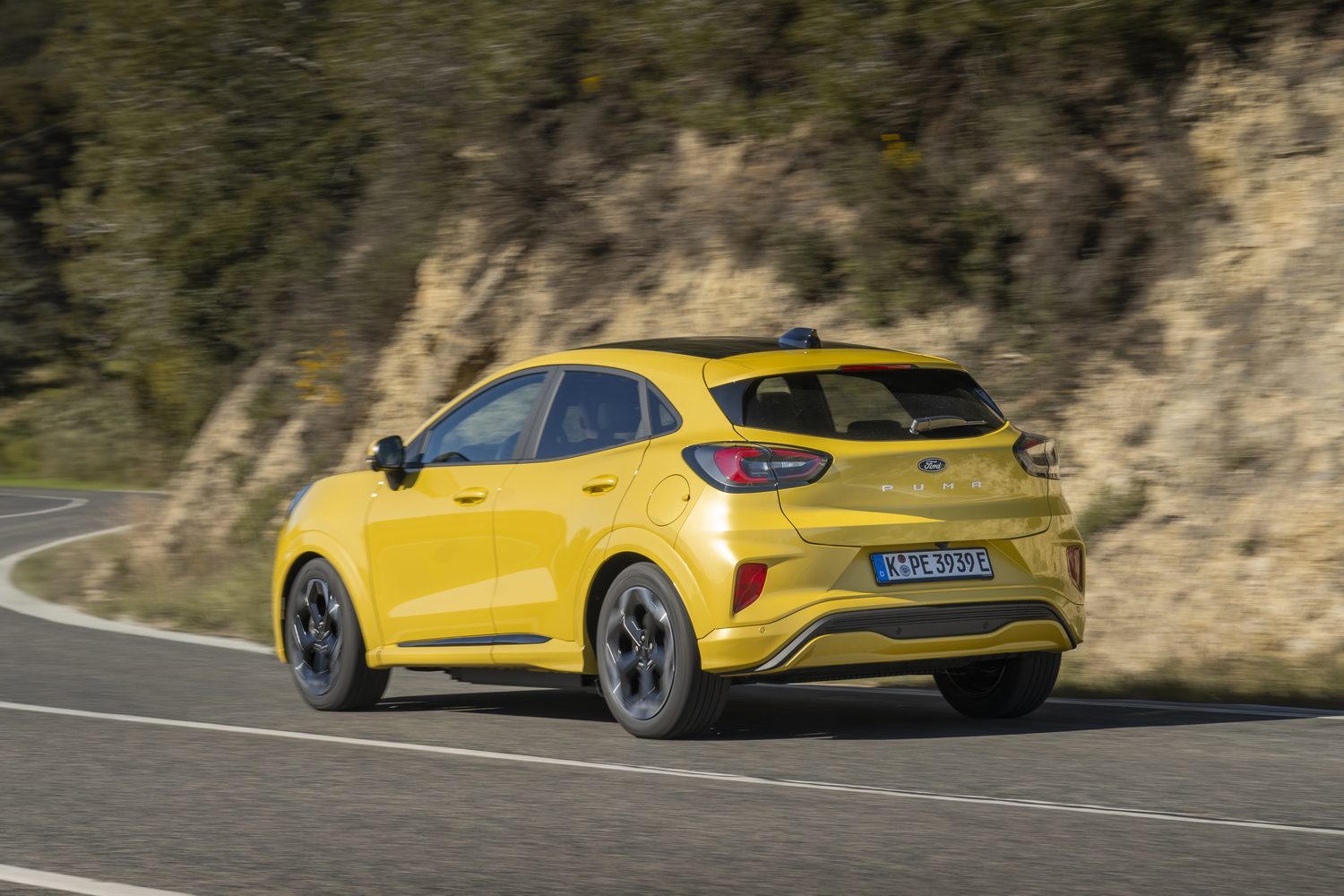
Unlike several car makers, Ford hasn't felt the need to give the Puma Gen-E an unnecessarily high-power output in a bid to entice buyers. It gets a modest 168hp electric motor that generates up to 290Nm as it drives the front wheels.
The performance delivery is smooth and linear. There's little chance of spinning a wheel when moving away from rest in the Normal driving mode, though switching to Sport does make the roll-on acceleration feel more urgent. Ford pipes in an artificial sound (which can be turned off) that isn't as annoying or contrived as in some other electric cars. The sound is more pronounced in the Sport mode too.
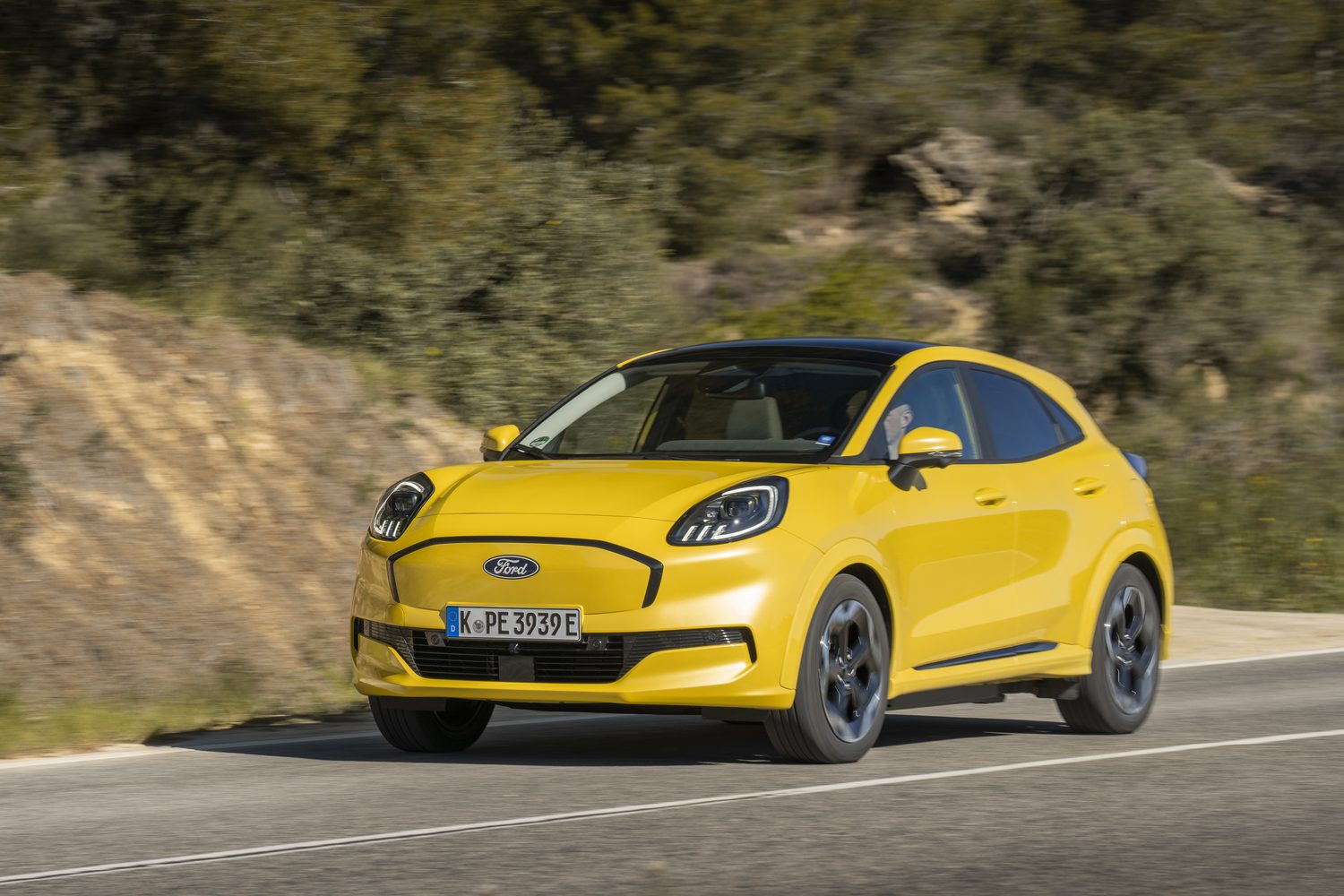
Our drive took place in the Puma Gen-E Premium that rides on larger 18-inch wheels and we found the suspension to be quite firm, if not uncomfortably so. More severe speed bumps can jar the cabin, even at low speeds. The steering feels light around town, and it is quite a manoeuvrable car thanks to a 10.5-metre turning circle. There are good lines of sight outwards and slender A-pillars that don't create any worrying blind spots when edging out of junctions.
Out of town and on more flowing roads, the Ford starts to show a more positive driving experience with good body control and little in the way of lean as you go through bends. It feels composed and stable in a way that makes it easy to place on the road.
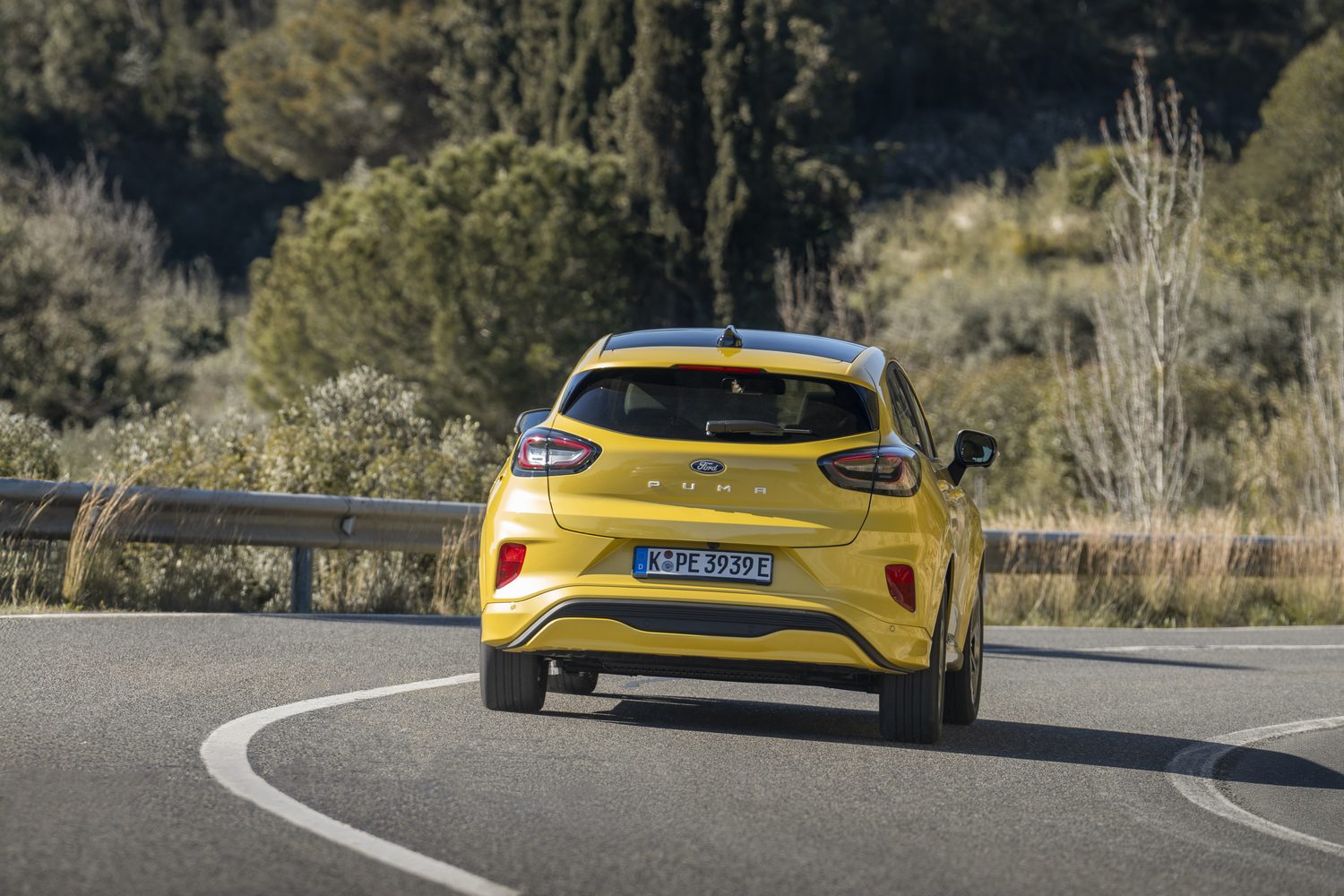
There's a positive and consistent feel from the brake pedal, though the one-pedal feature is better still when it comes to scrubbing off some speed while sending energy back into the battery. This feature is great in the city and works just as well out of town. You quickly become used to how much you need to lift off the accelerator by to slow the car to a stop without pressing the brake pedal at all.
The Puma Gen-E's battery isn't as large as many of its closest competitors', so while it lags behind on the driving range table, there are some upsides to a smaller battery - such as shorter charging times. Ford says that a 10 to 80 per cent recharge can be done in as little as 23 minutes on a DC fast charger, whereas many rivals need around 30 minutes. Admittedly you'll have to charge the Ford up more often as it holds less energy.
In order to maximise charging performance, Ford has built in a preconditioning system that relies on the car's navigation to determine when to warm (or cool) the battery accordingly so that it is at the optimum temperature when you arrive at the charging station.
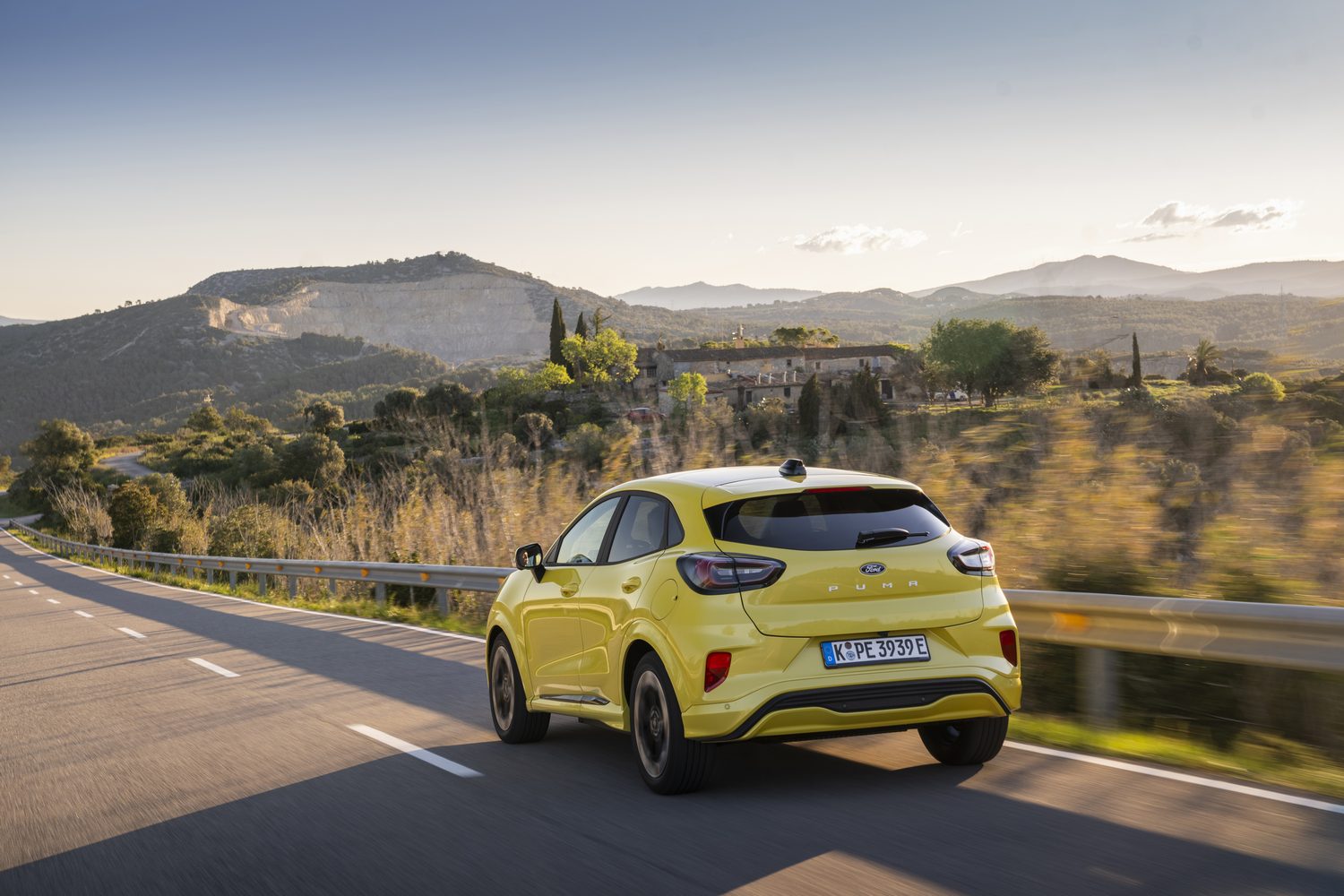
Ford could have added this as a manual function, but it found that the majority of drivers weren't aware of how long it can take to bring the battery to the correct temperature. So rather than allow people to do it and get a less-than-positive experience, it opted to let the car handle it for the best results. However, that will only occur when drivers are using the car's native navigation for route guidance.
Running costs and Range of the 2025 Ford Puma Gen-E
• A range of 347km isn't amazing
• Almost matches official efficiency figures
• Much cheaper to run than a petrol Puma
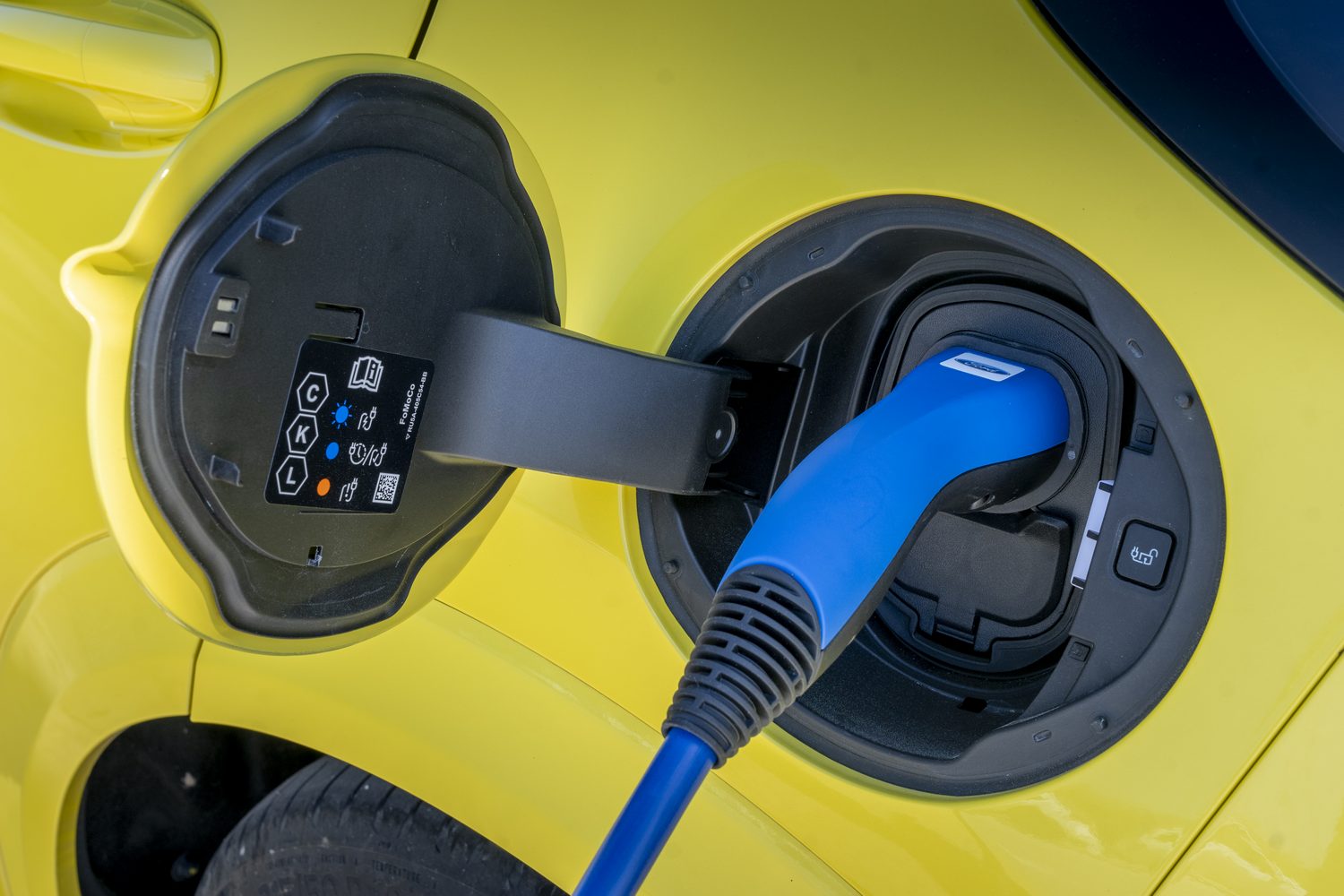
If you can charge the Puma Gen-E at home, and you have a favourable energy tariff, then it will be a very affordable car to run.
During our time with the car, we covered several different driving scenarios from city use to fast motorway driving and it returned an indicated 15kWh/100km. That figure is reasonably close to the official figure of 14.5kWh/100km for the Premium spec. The Ford's aerodynamics and relatively low weight certainly help contribute to that.
Irish Pricing & Rivals of the 2025 Ford Puma Gen-E
• Puma Gen-E starts at €32,916
• Two specification grades available
• Select gets a longer range
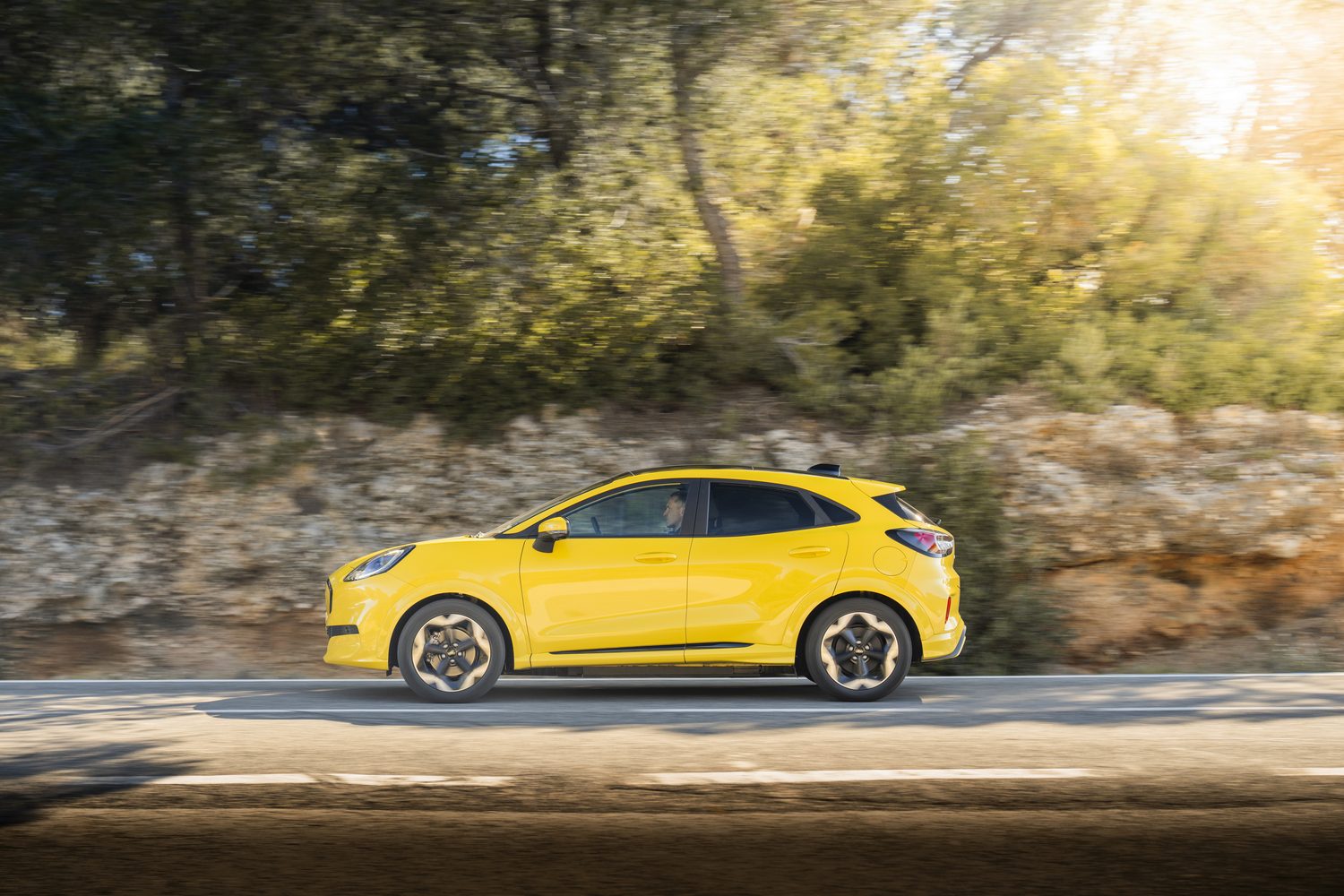
Irish prices for the Ford Puma Gen-E start from €32,916 for the Select specification, including applicable government grants. The Select model features 17-inch alloy wheels, LED projector headlights, the dual-screen dashboard setup and rear privacy glass.
The standard equipment doesn't differ a huge amount in moving to the Premium grade, which costs €40,165. The alloy wheels are upgraded to 18-inch items, the headlights are LED Matrix, which provide dynamic illumination with the high-beam function, and the tailgate is powered. These are nice upgrades, but given the powertrain is identical, and the range is marginally less, we don't see a huge advantage in spending the extra money to upgrade to the Premium model.
Verdict - Should You Buy the 2025 Ford Puma Gen-E?
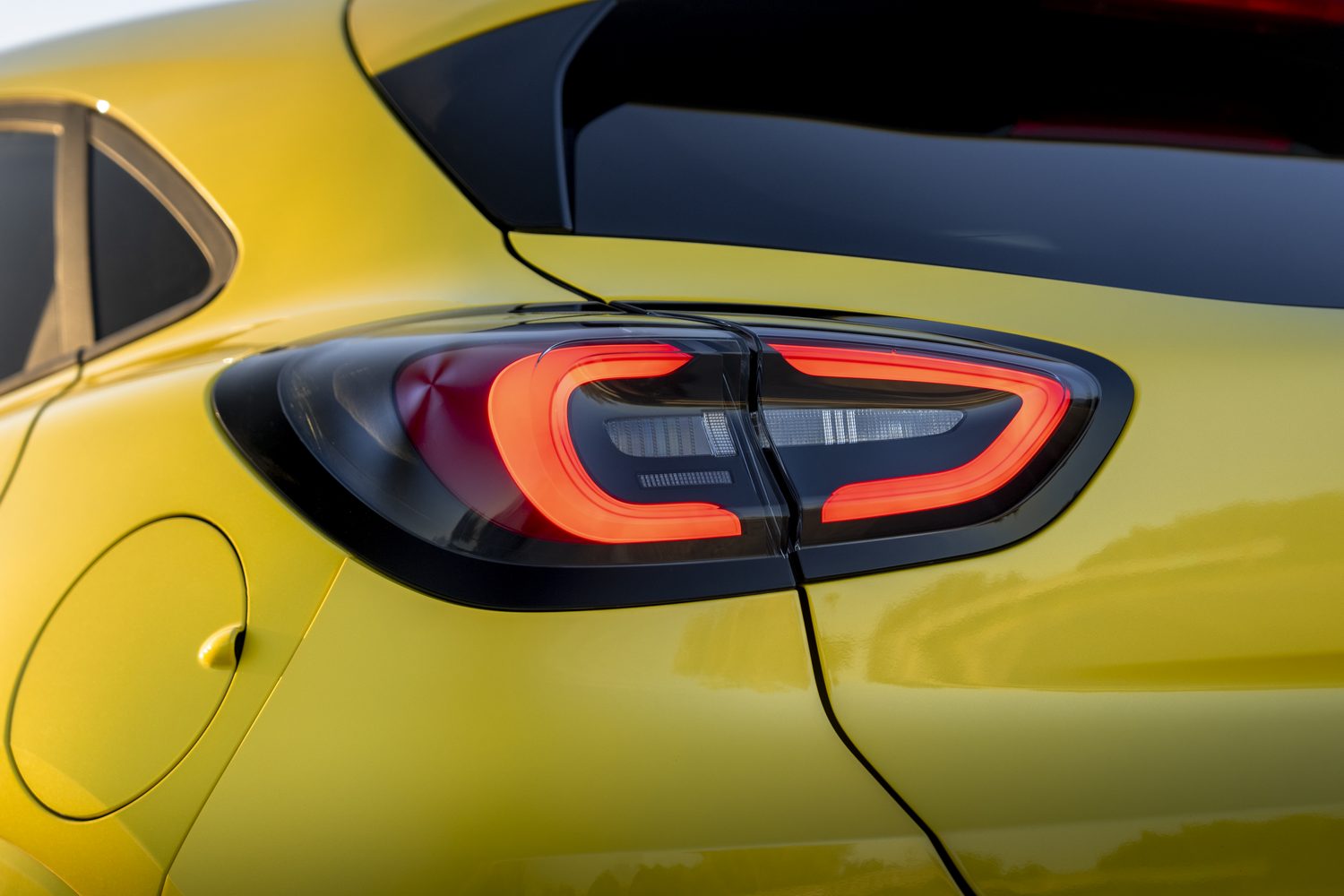
On paper the Puma Gen-E doesn't make a particularly convincing case for itself by way of a shorter driving range than many competitors. However, as with all electric vehicles, our recommendation is to look at what your average daily or weekly driving distance is and use that data to help your purchase decision.
The Ford Puma Gen-E is a decent car to drive, even with the ride being on the firmer side of things. That aside, it has positive handling, well-judged one-pedal setup for urban driving and a practical interior. If boot capacity is a priority for you then the Ford is unlikely to disappoint.
FAQs About the 2025 Ford Puma Gen-E
What's the maximum charging rate for the Ford Puma Gen-E?
The Ford Puma Gen-E has a peak DC charge rate of 100kW, resulting in a 10 to 80 per cent charge taking 23 minutes.
How safe is the Ford Puma Gen-E?
We haven't seen a dedicated Euro NCAP test for the electric version of the Puma, but when the combustion-engined version was first tested in 2019 it achieved a five-star rating. However, that decreased to a four-star rating when the car was re-tested in 2022 under stricter conditions.
Want to know more about the Ford Puma Gen-E?
If there's anything about the Ford Puma Gen-E we haven't covered, or you'd like advice on choosing between it and other cars, you can access our (completely free) expert advice service via the Ask Us Anything page.

